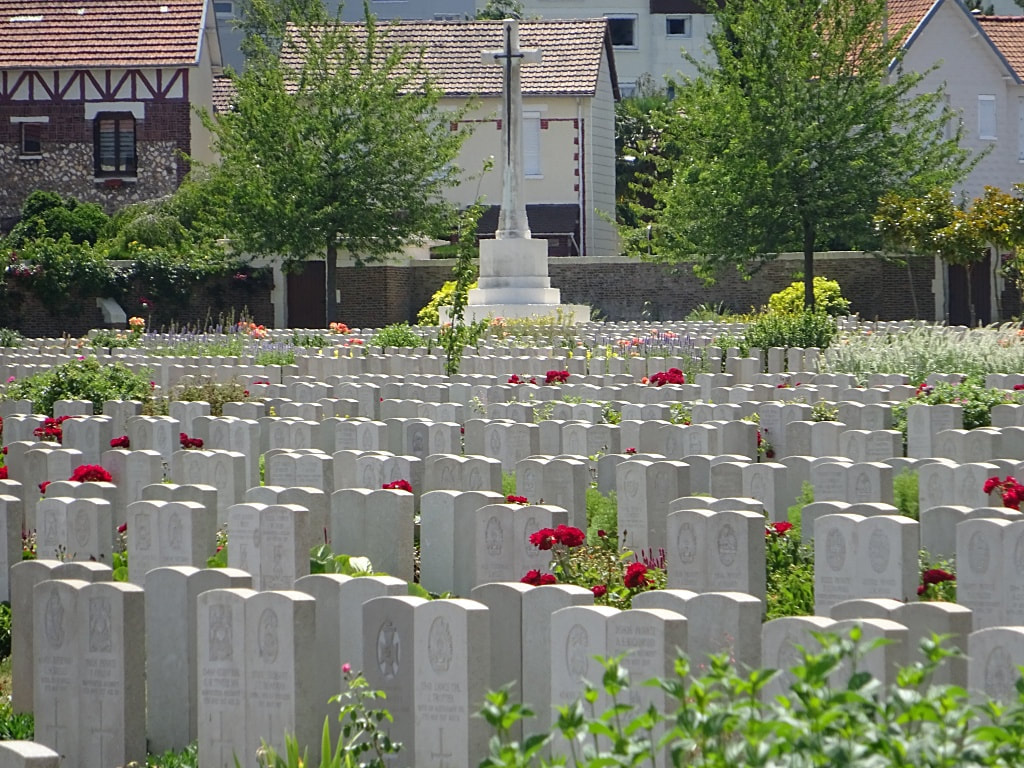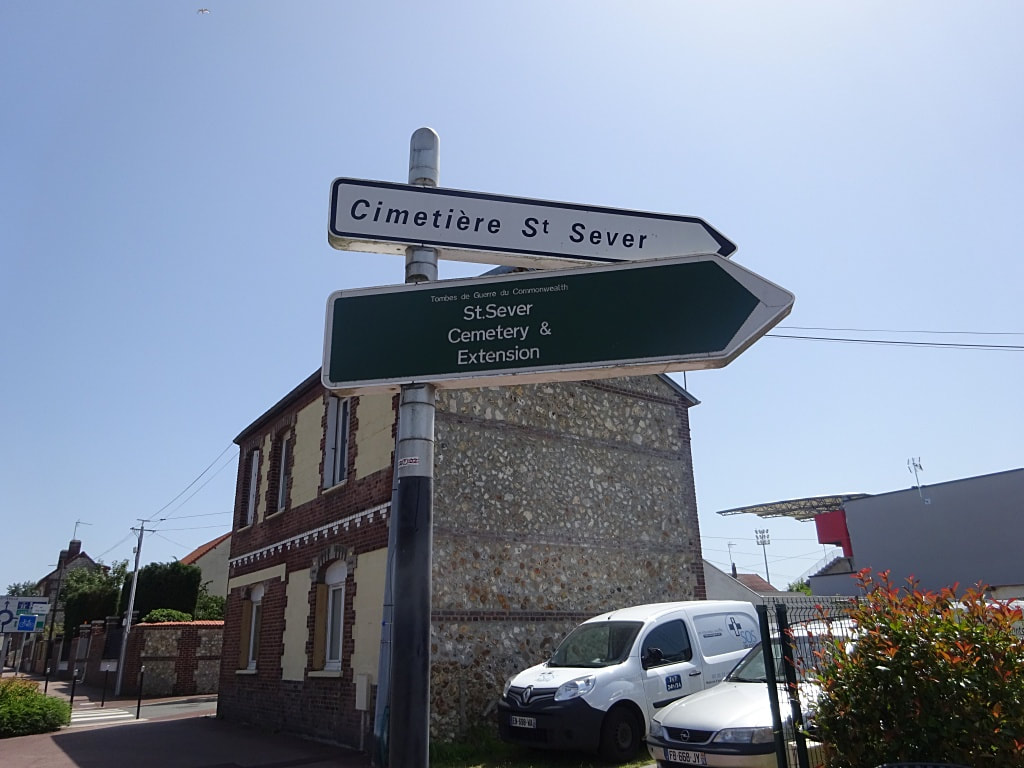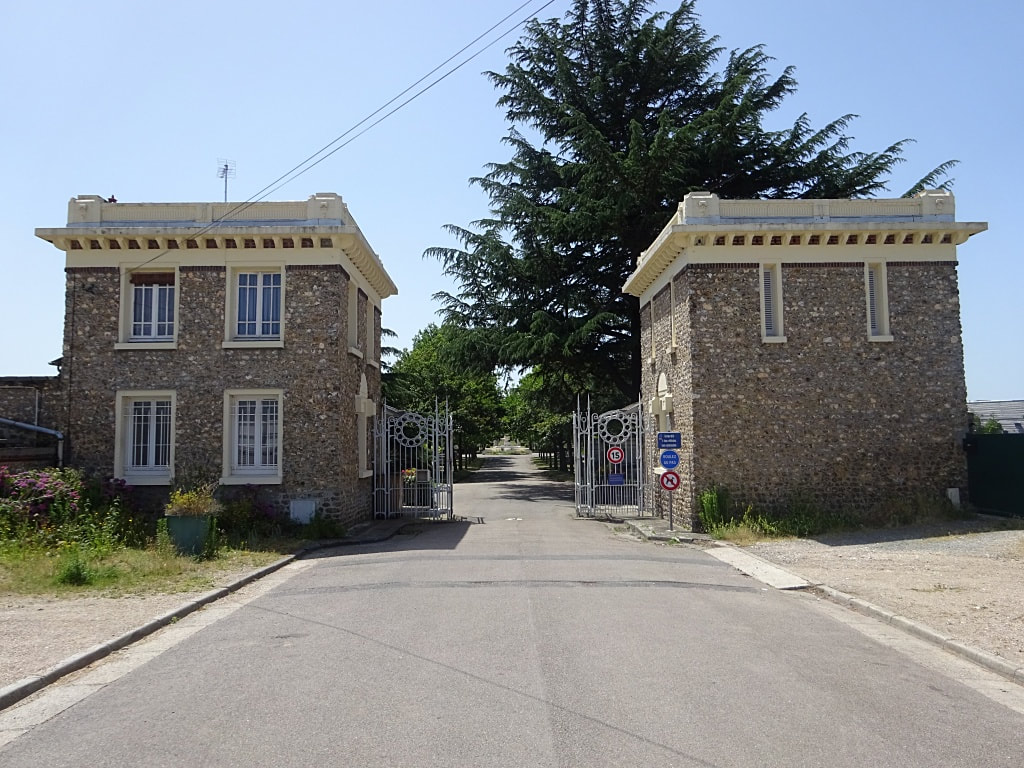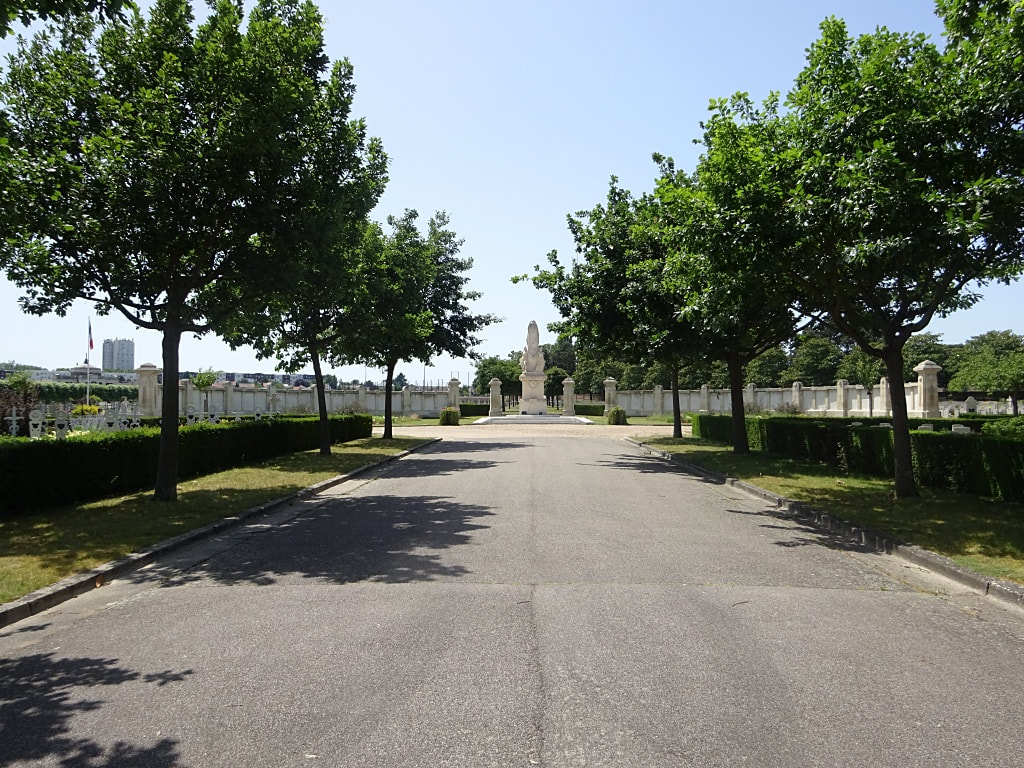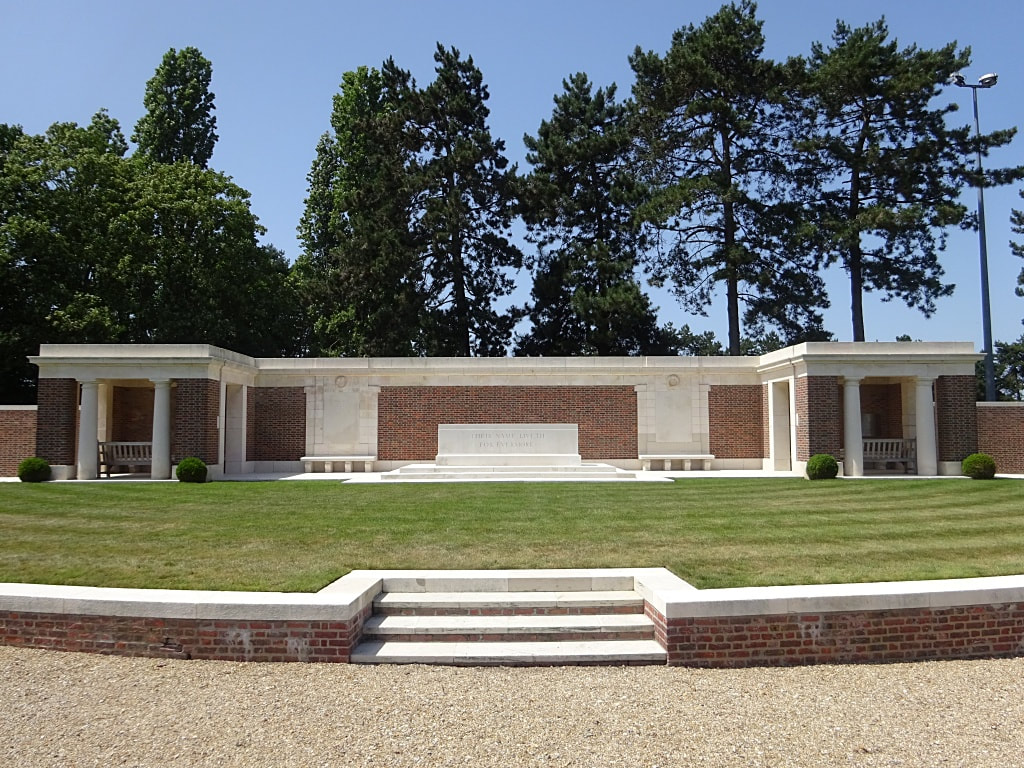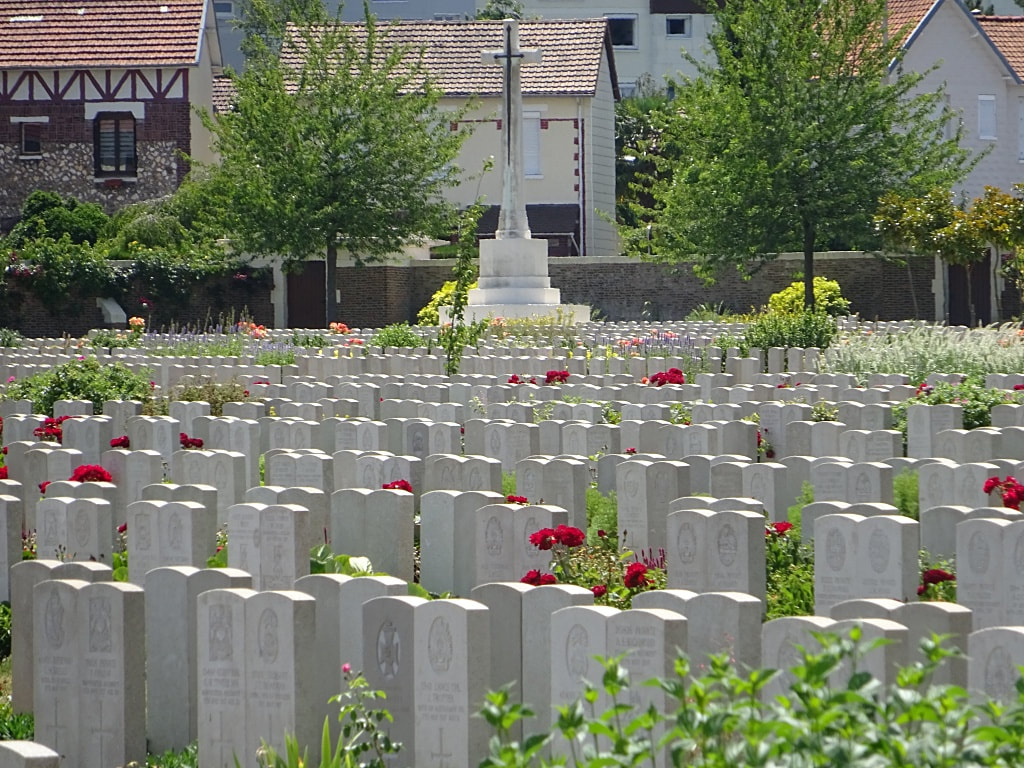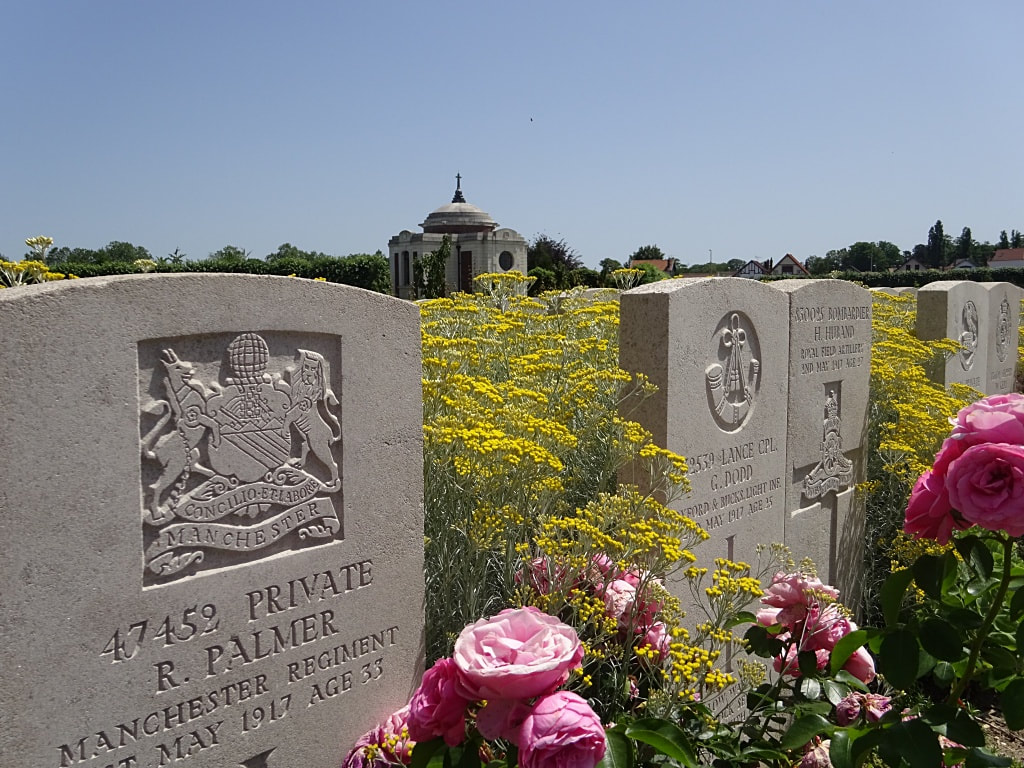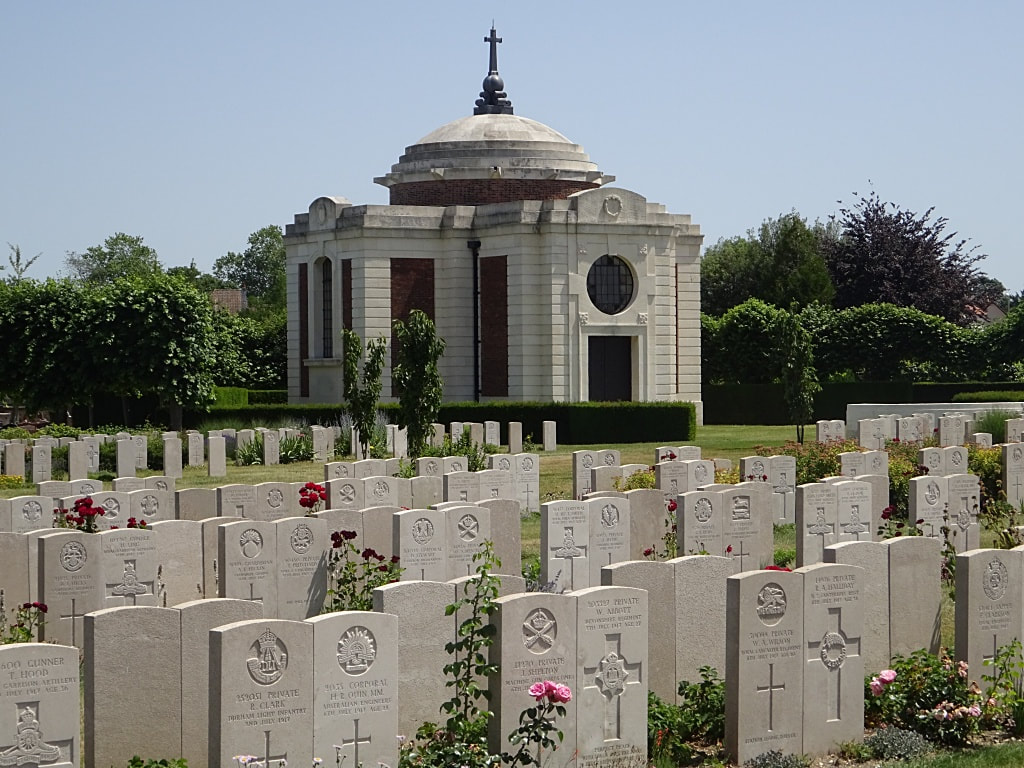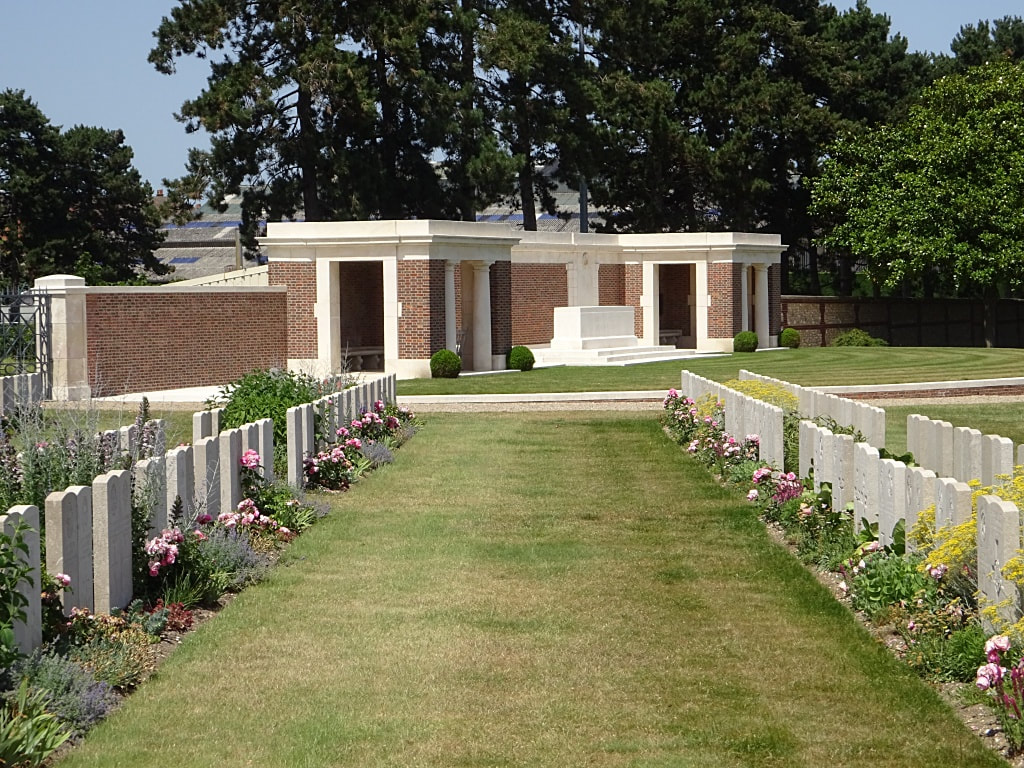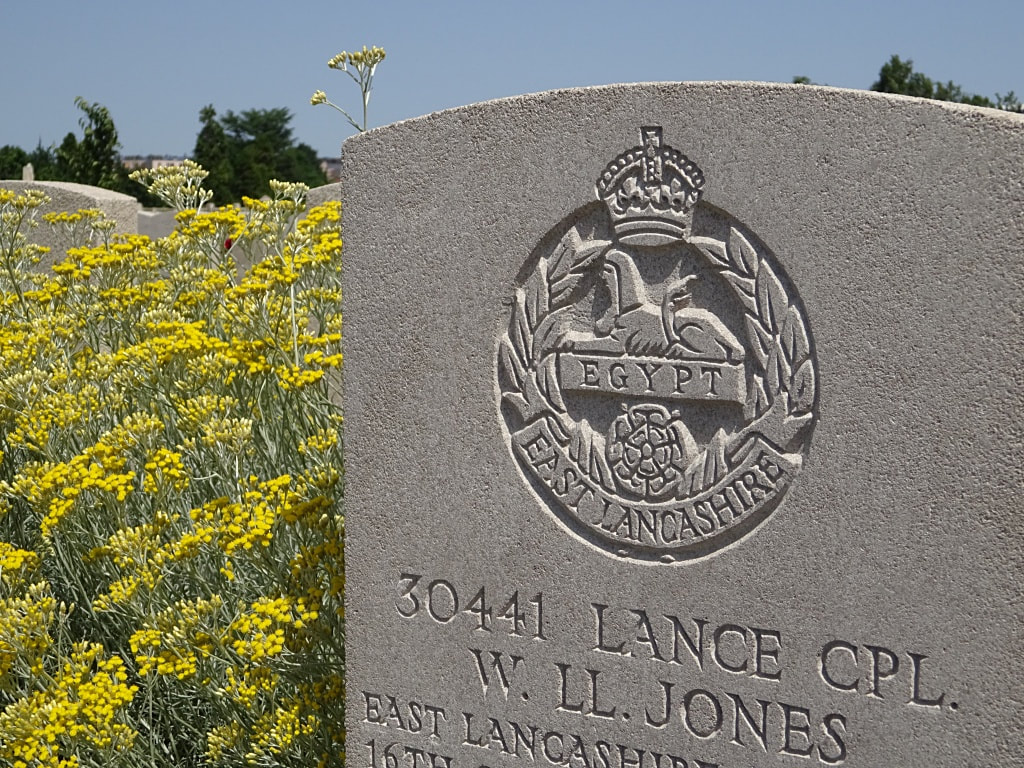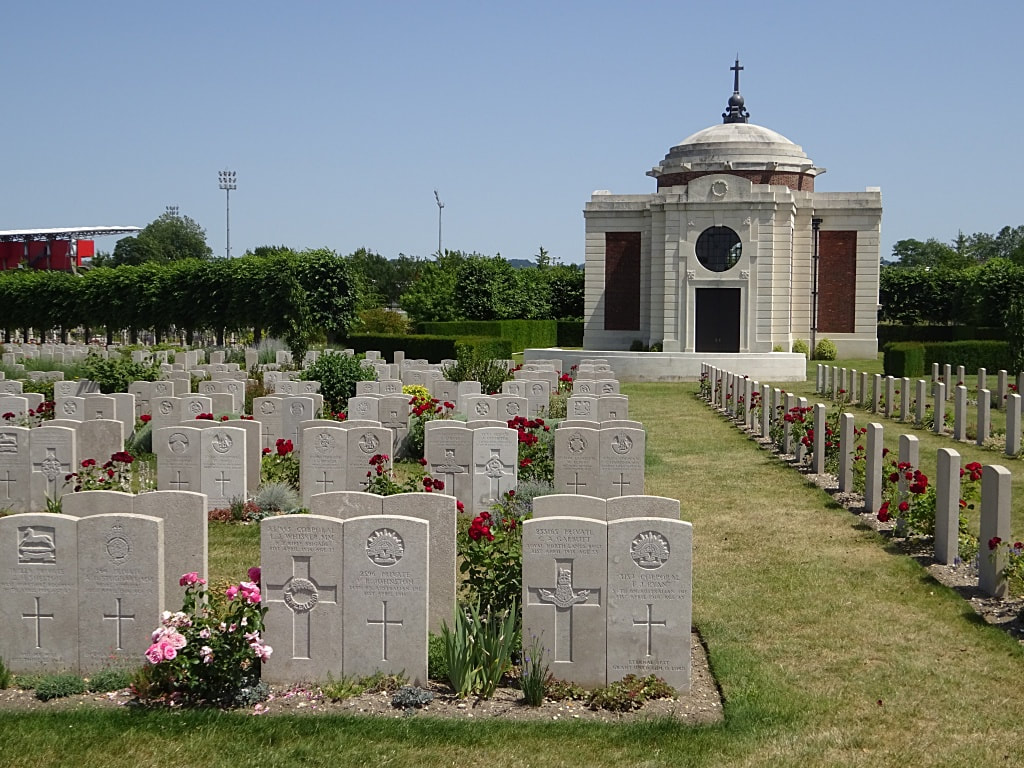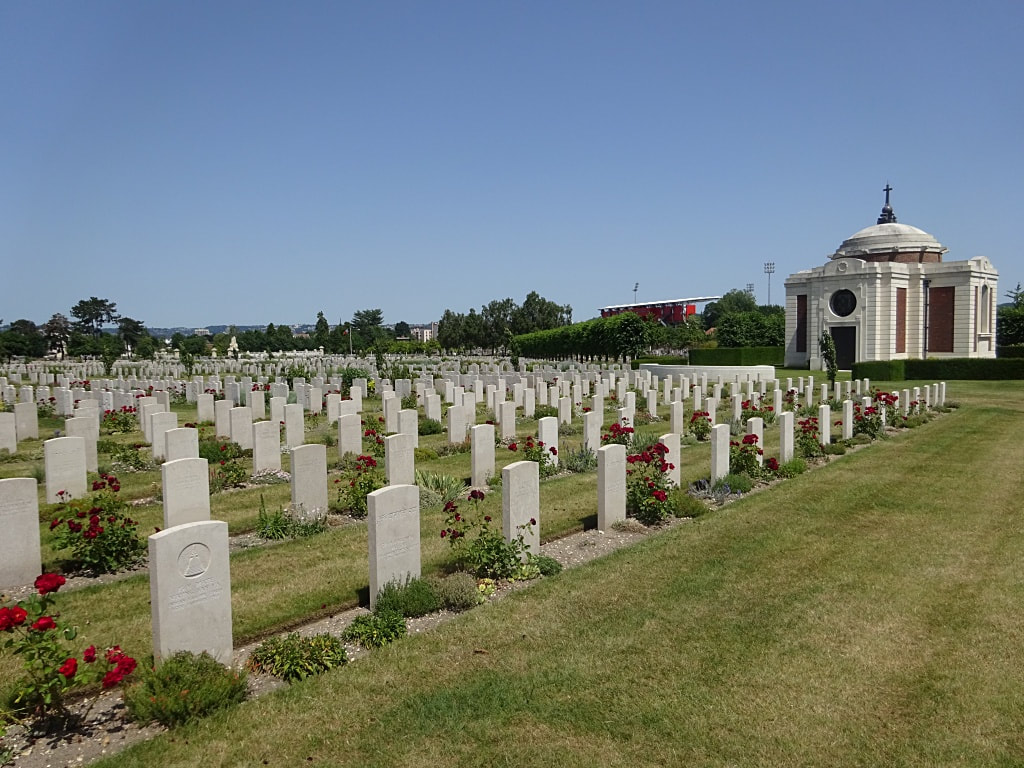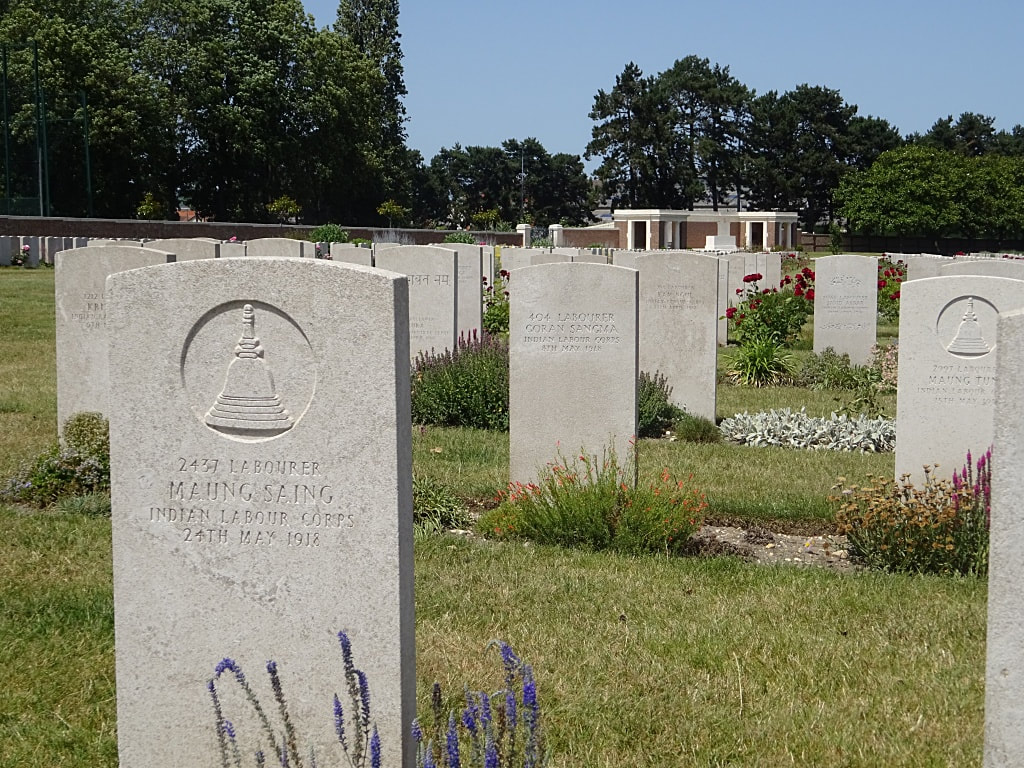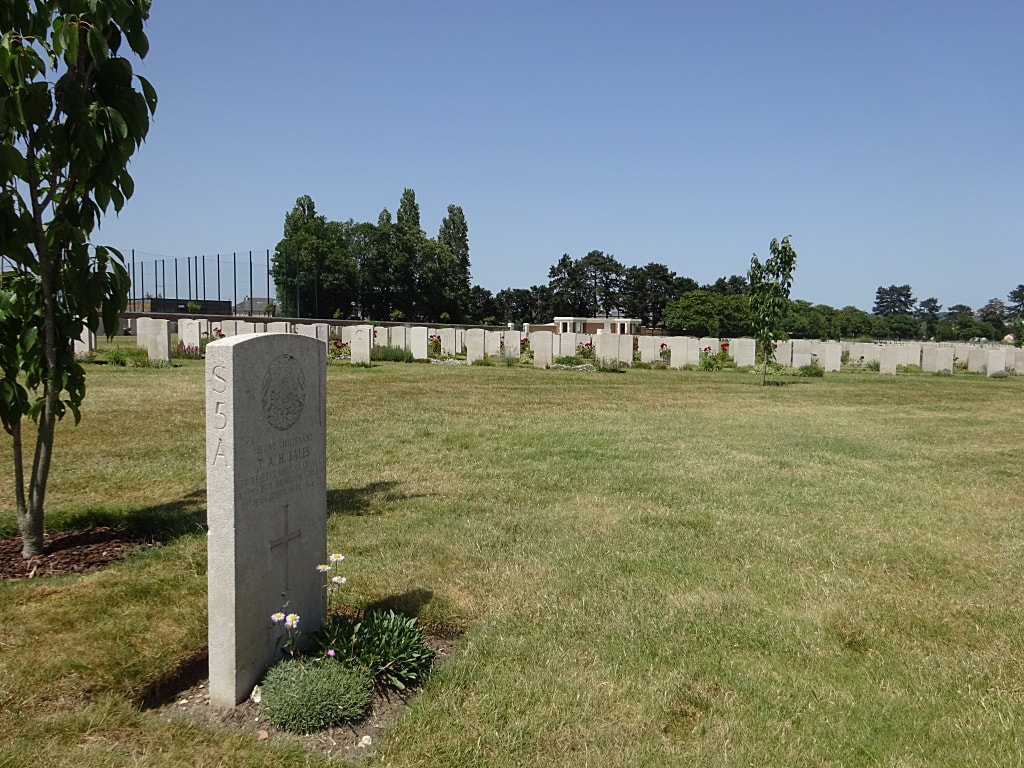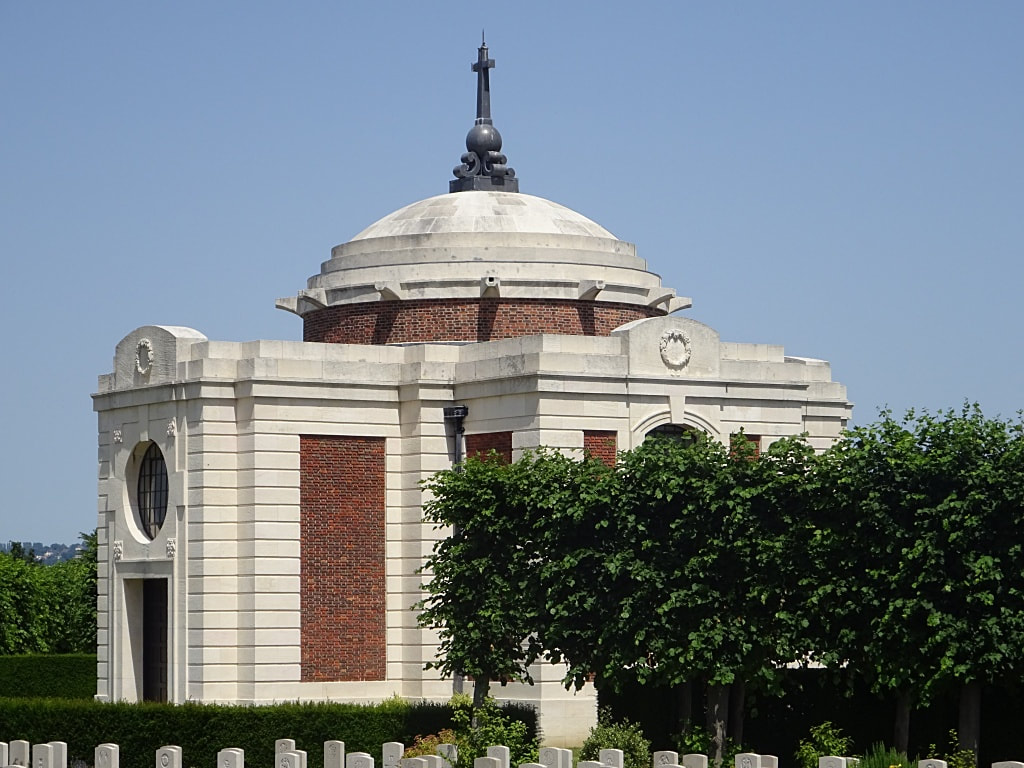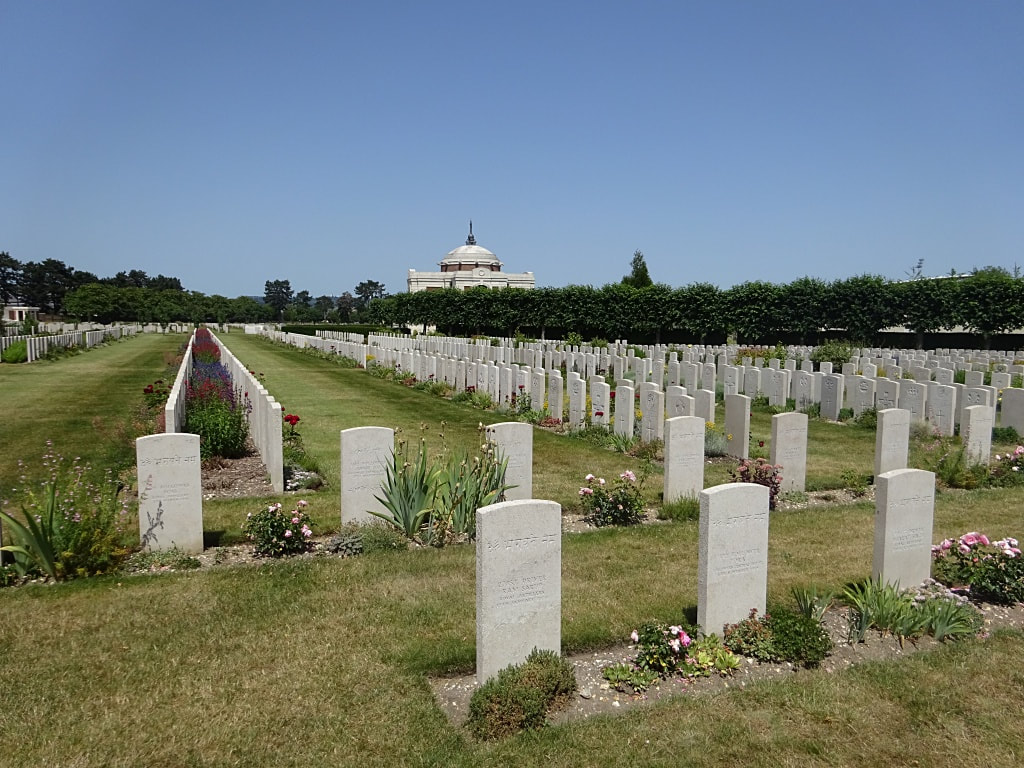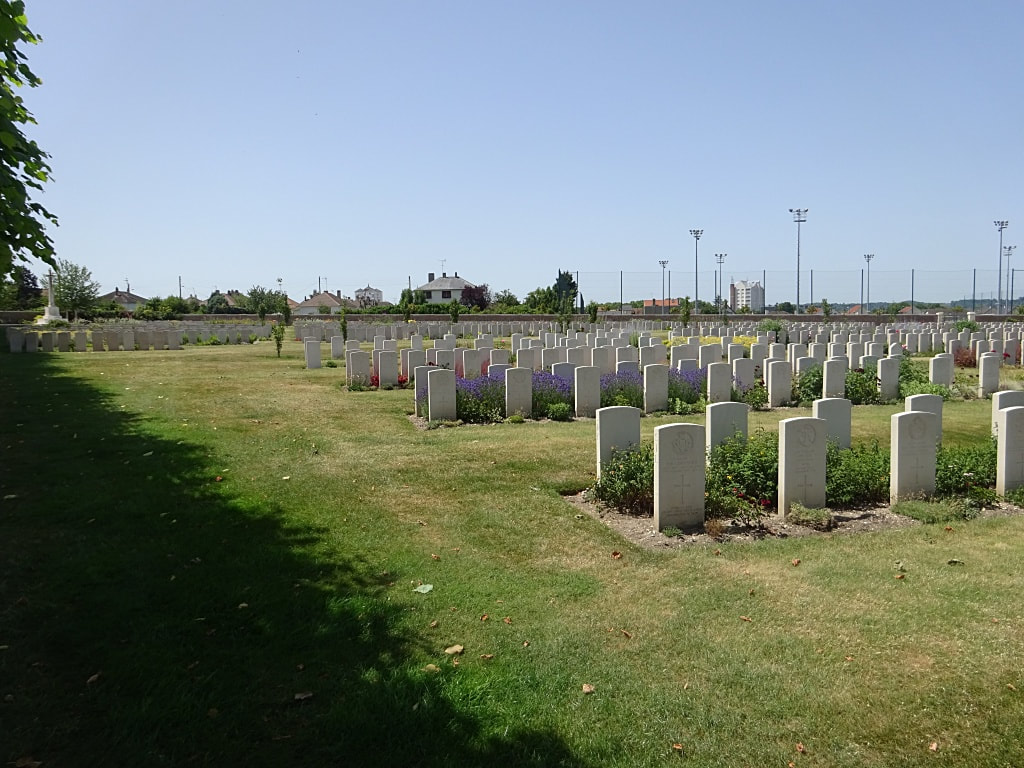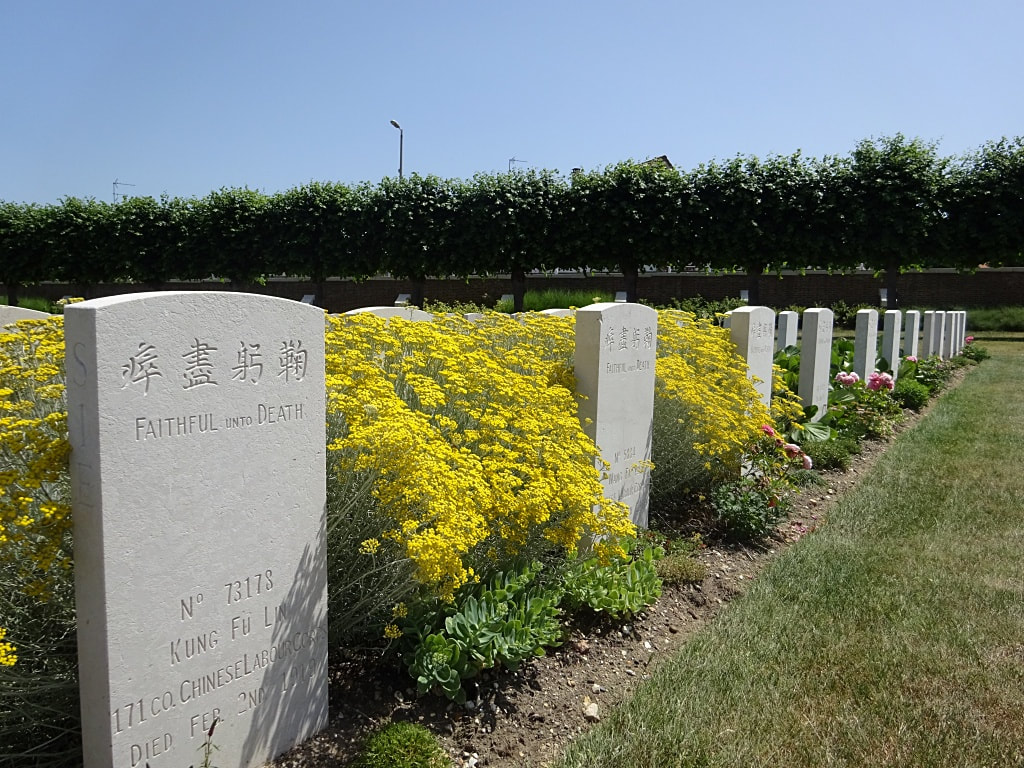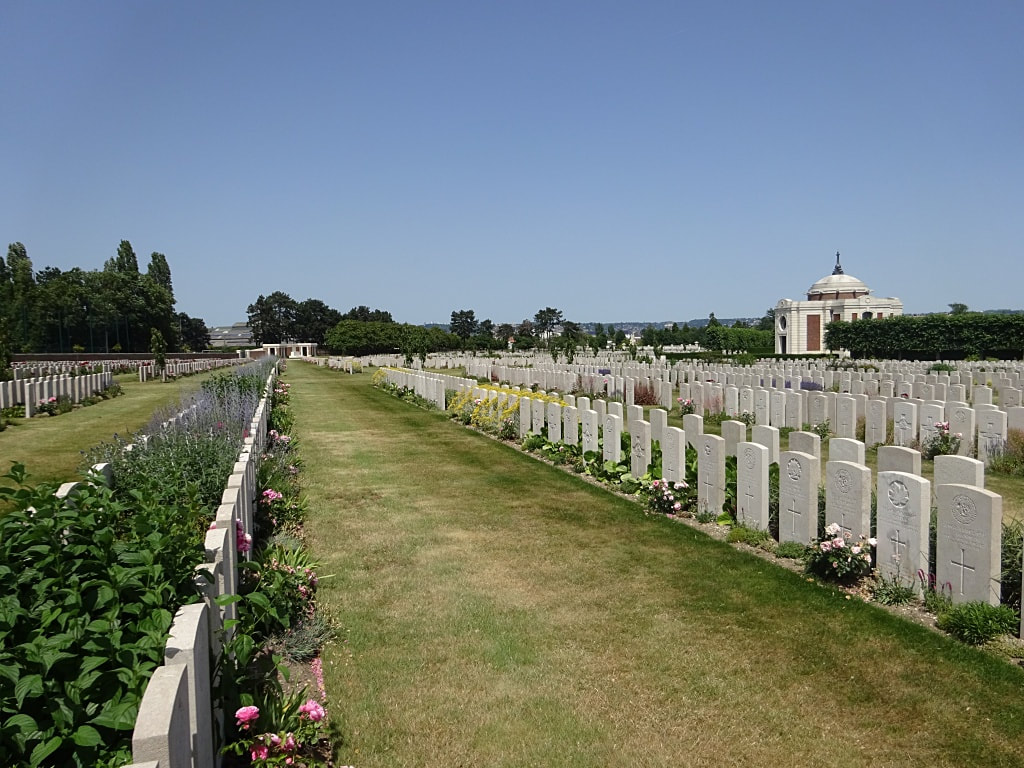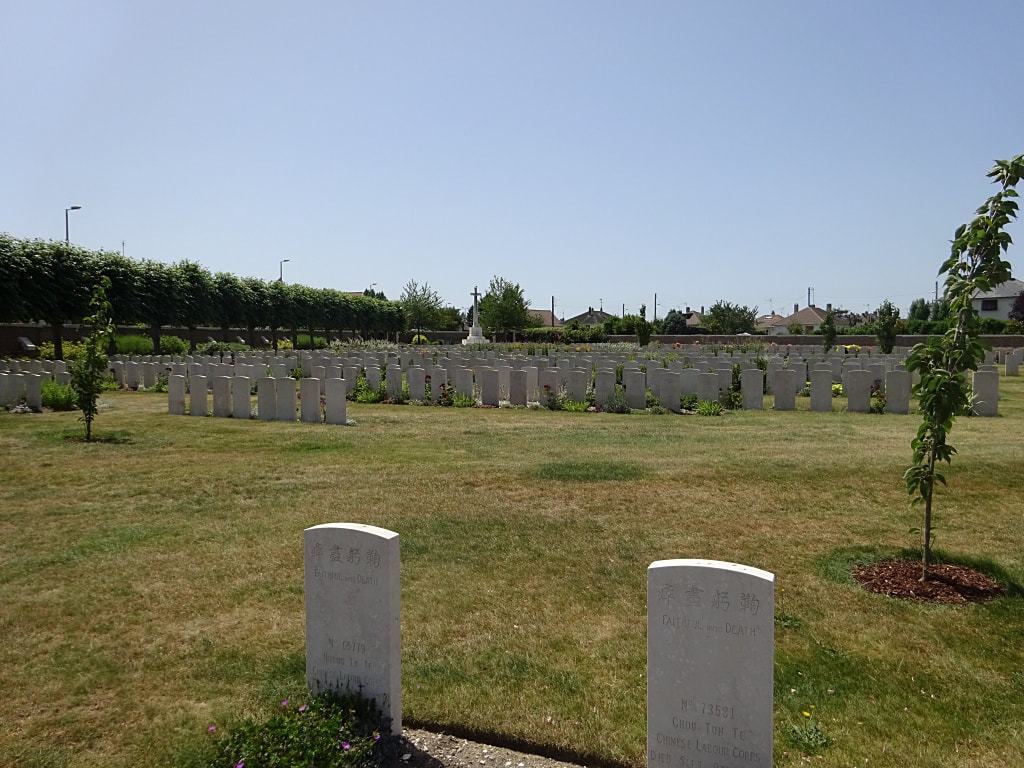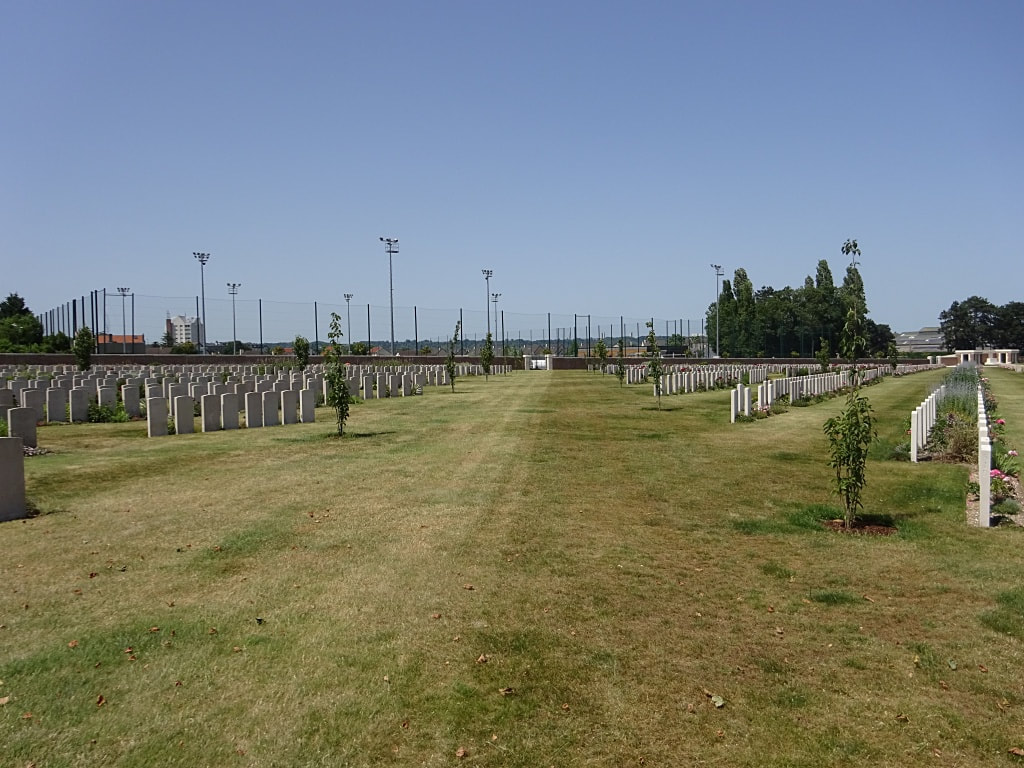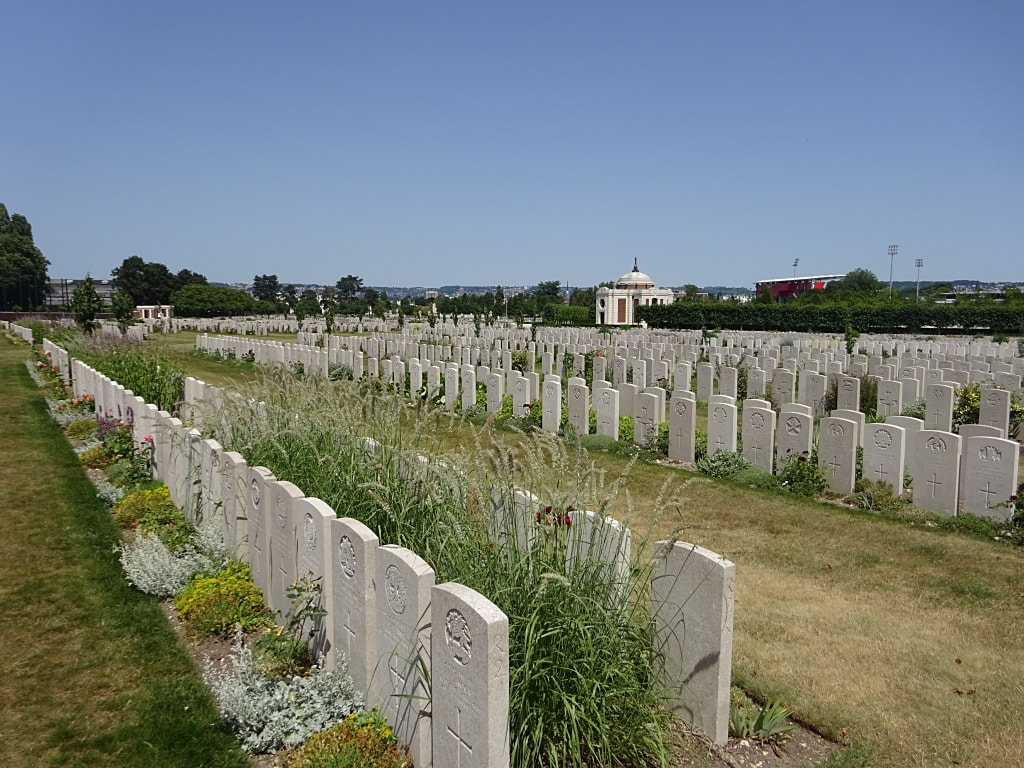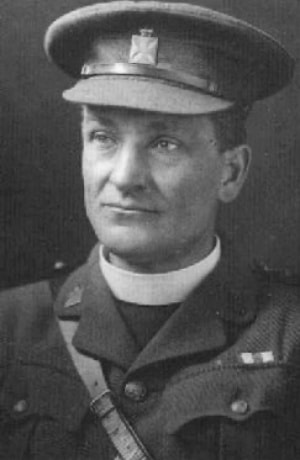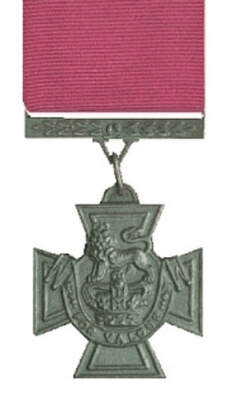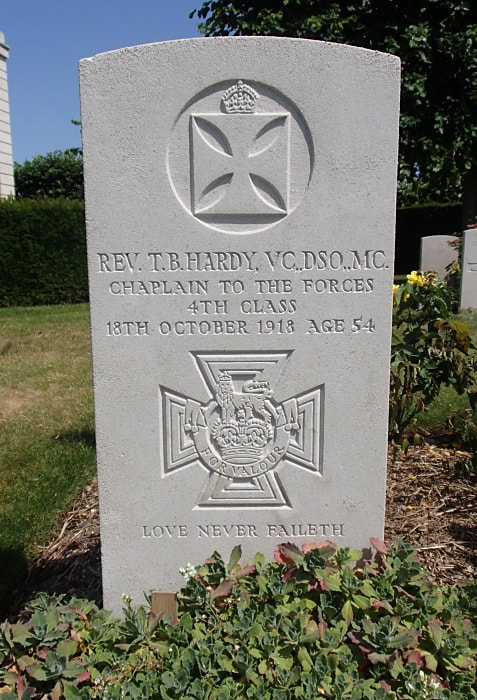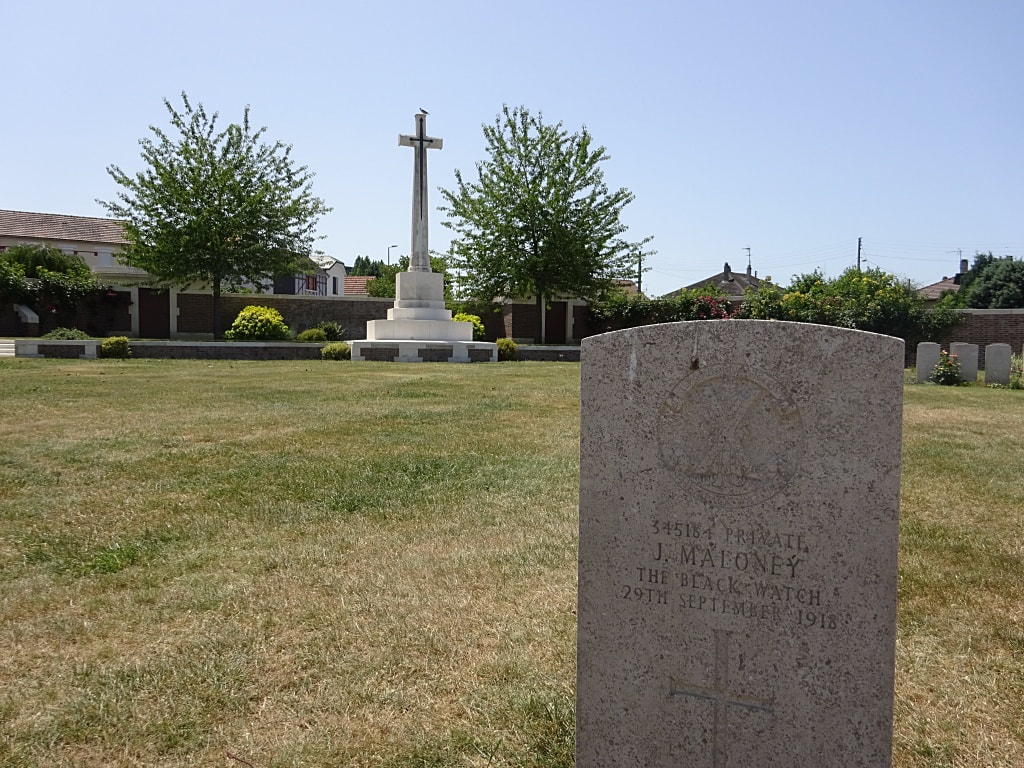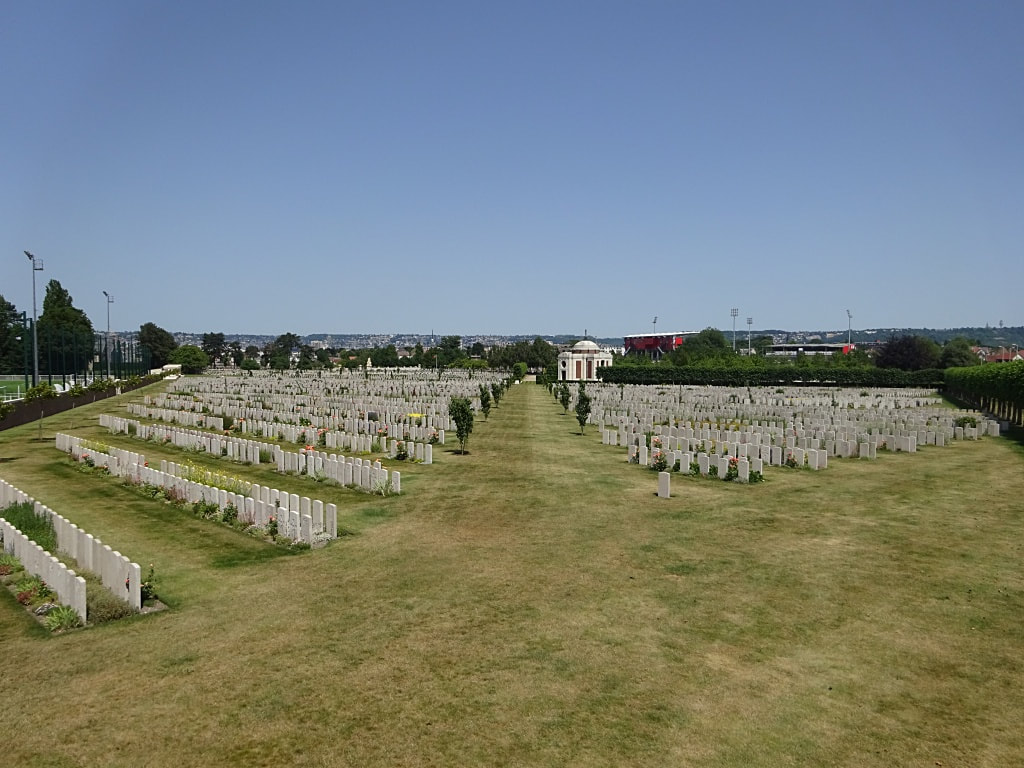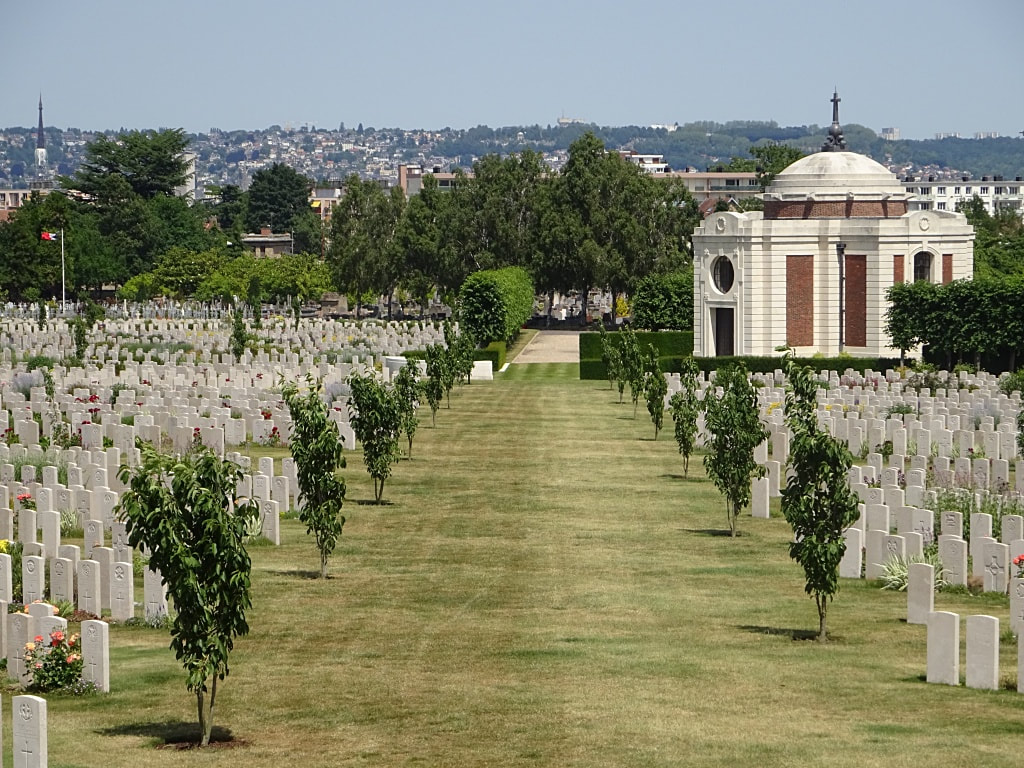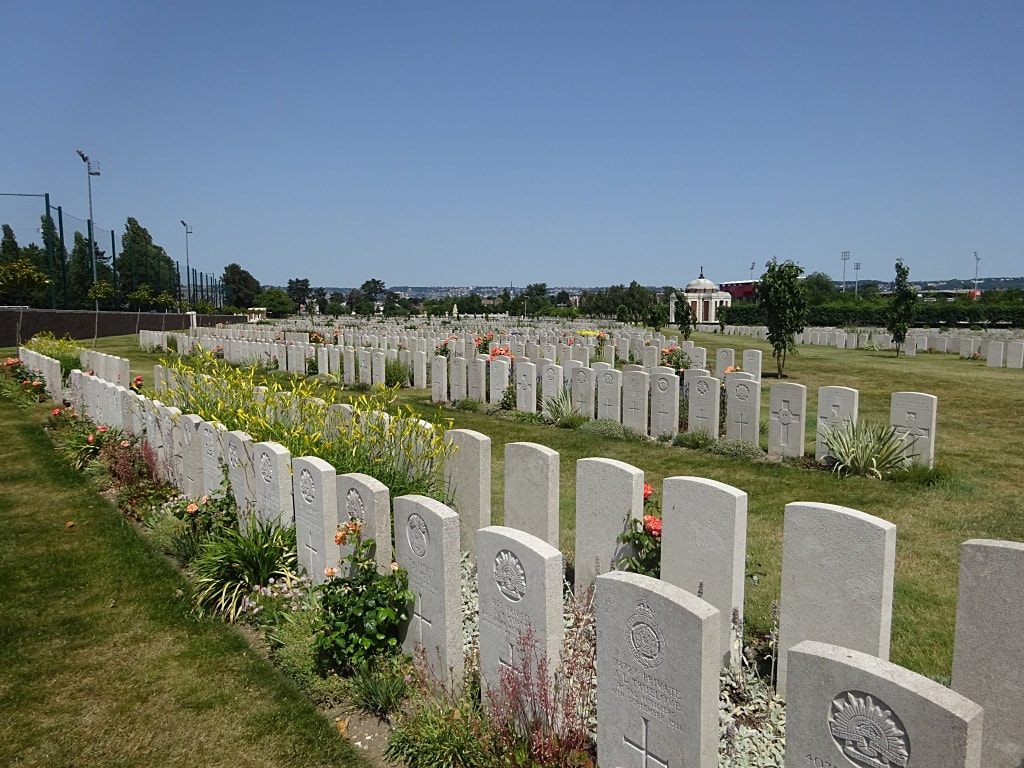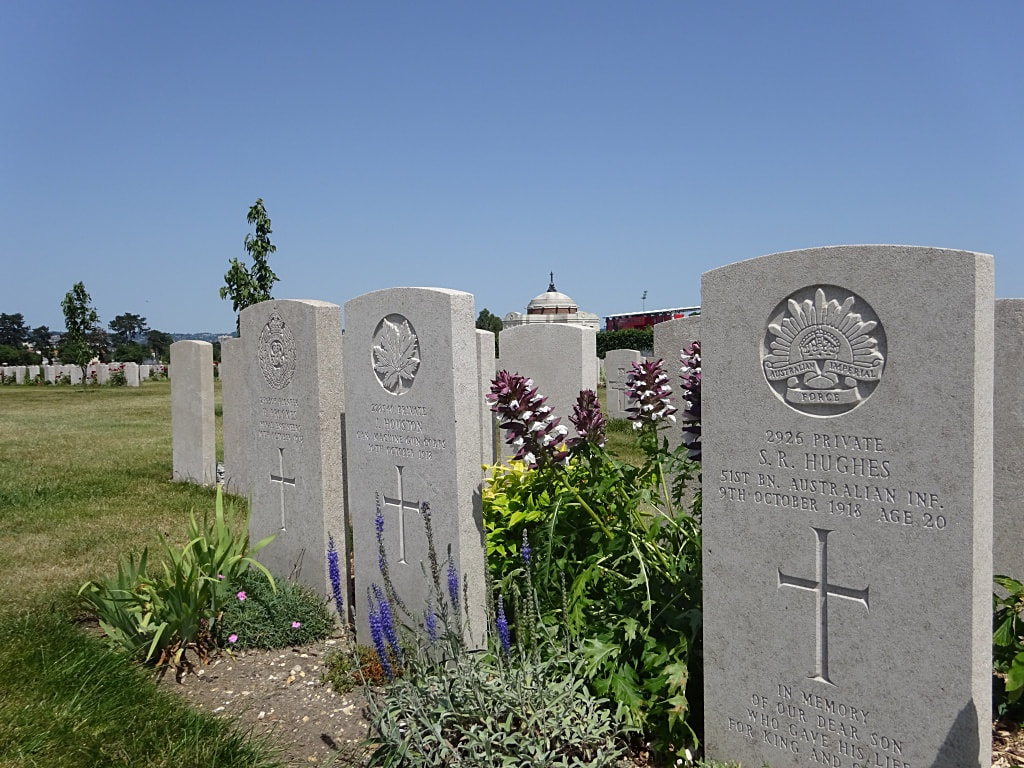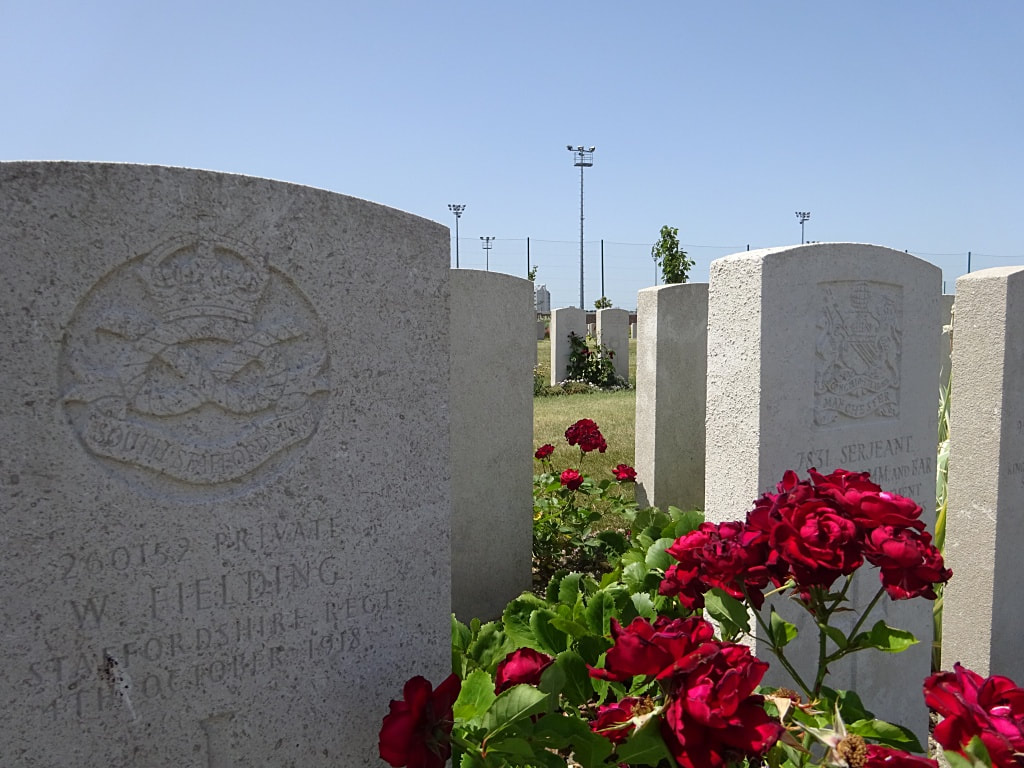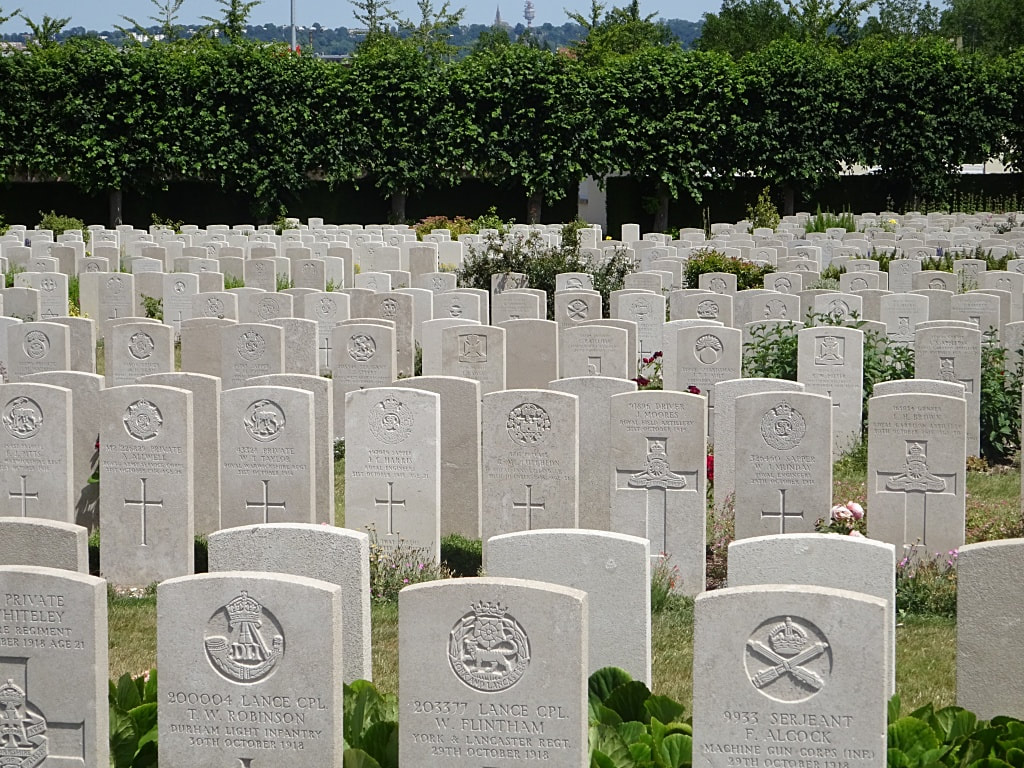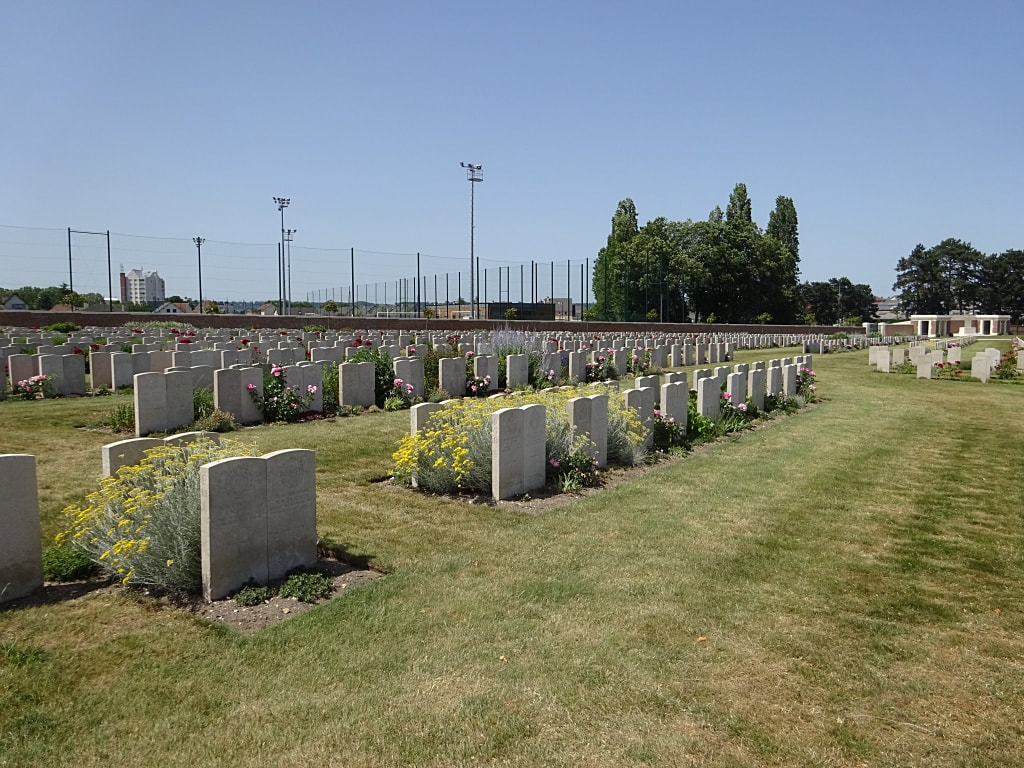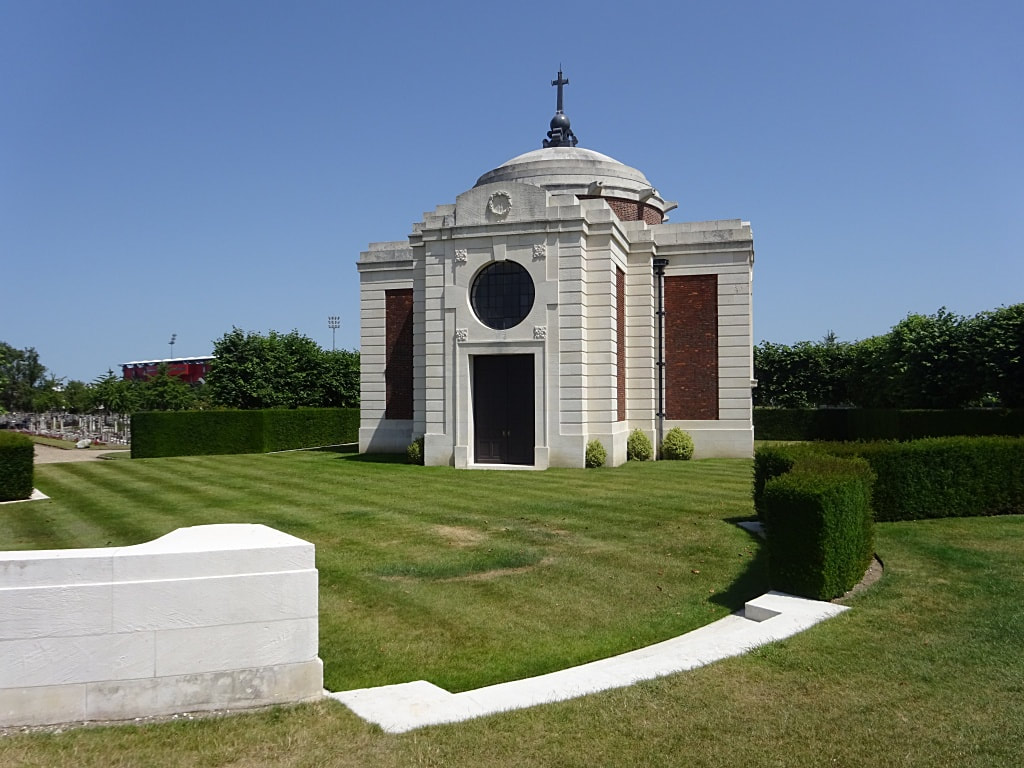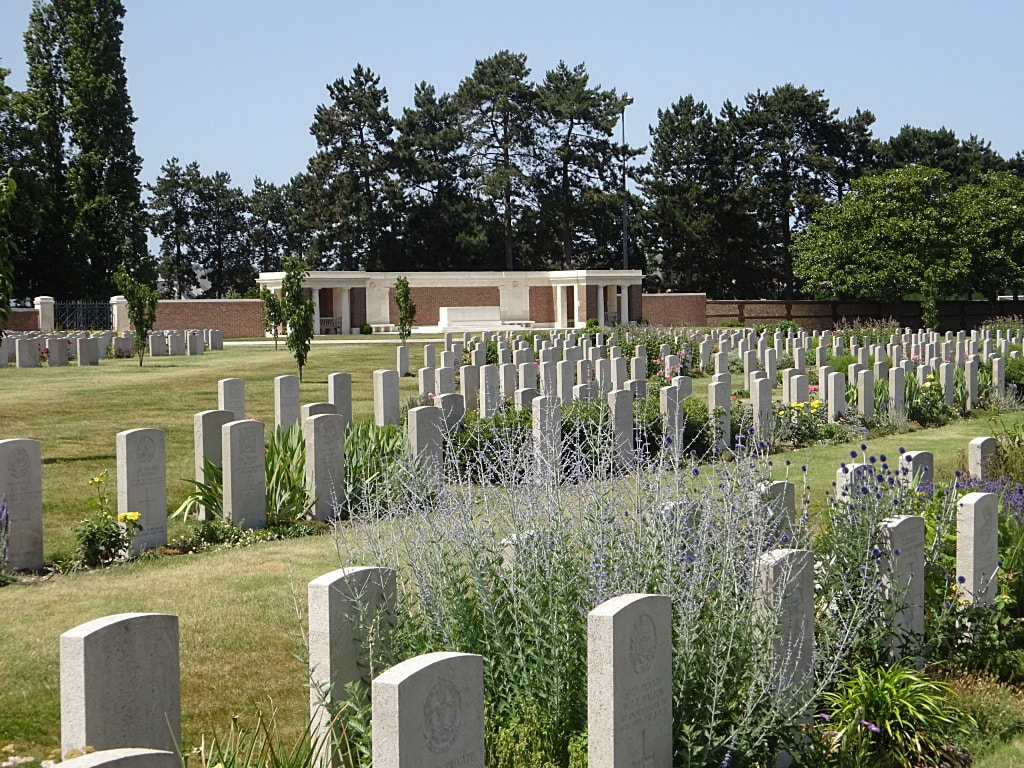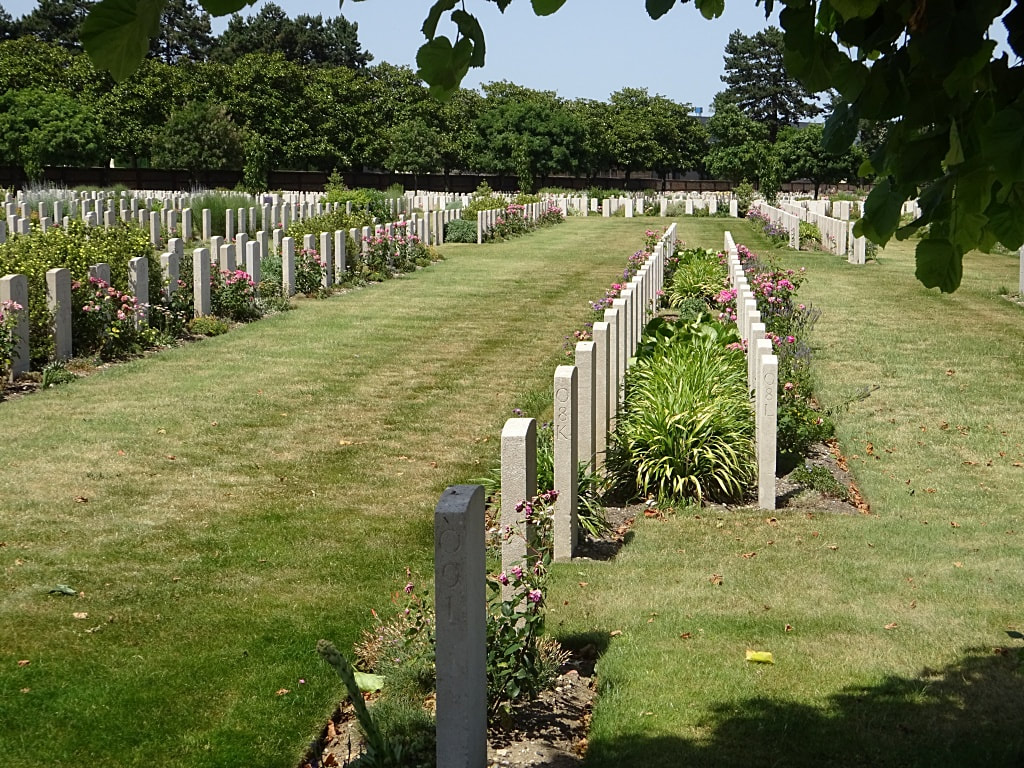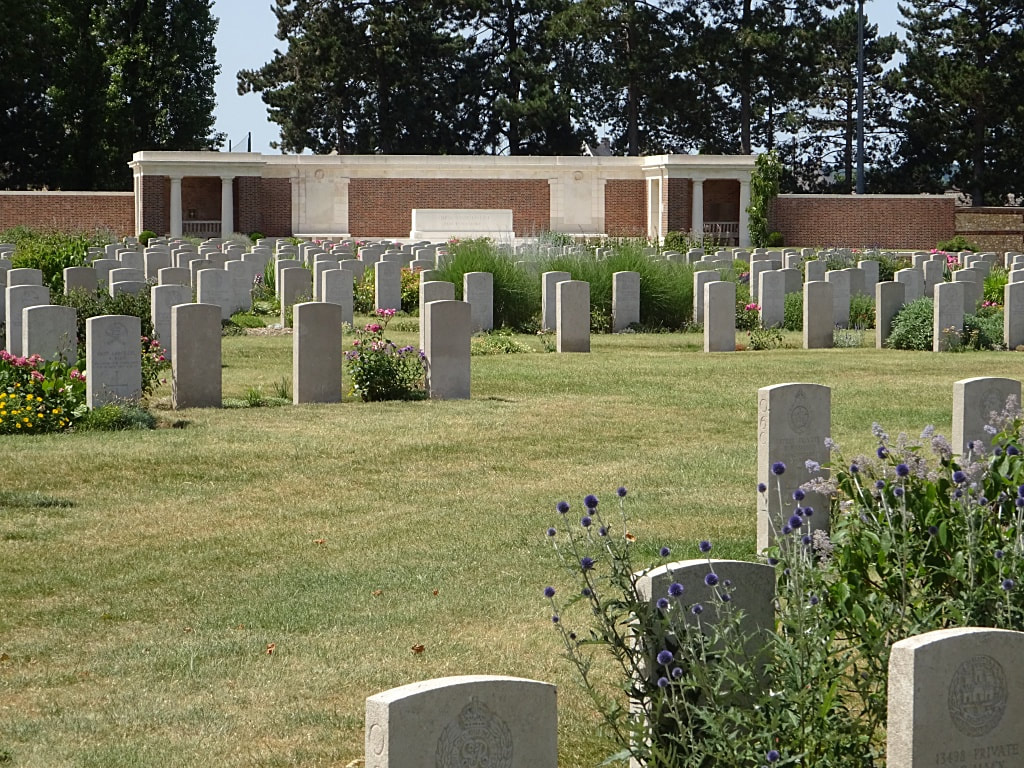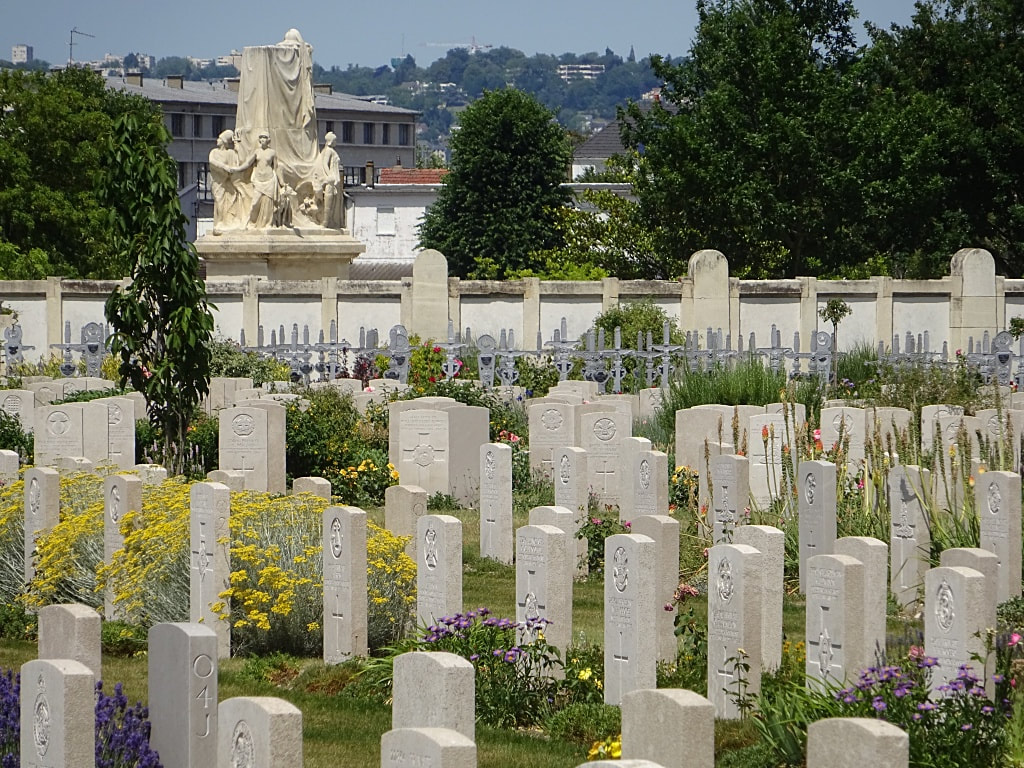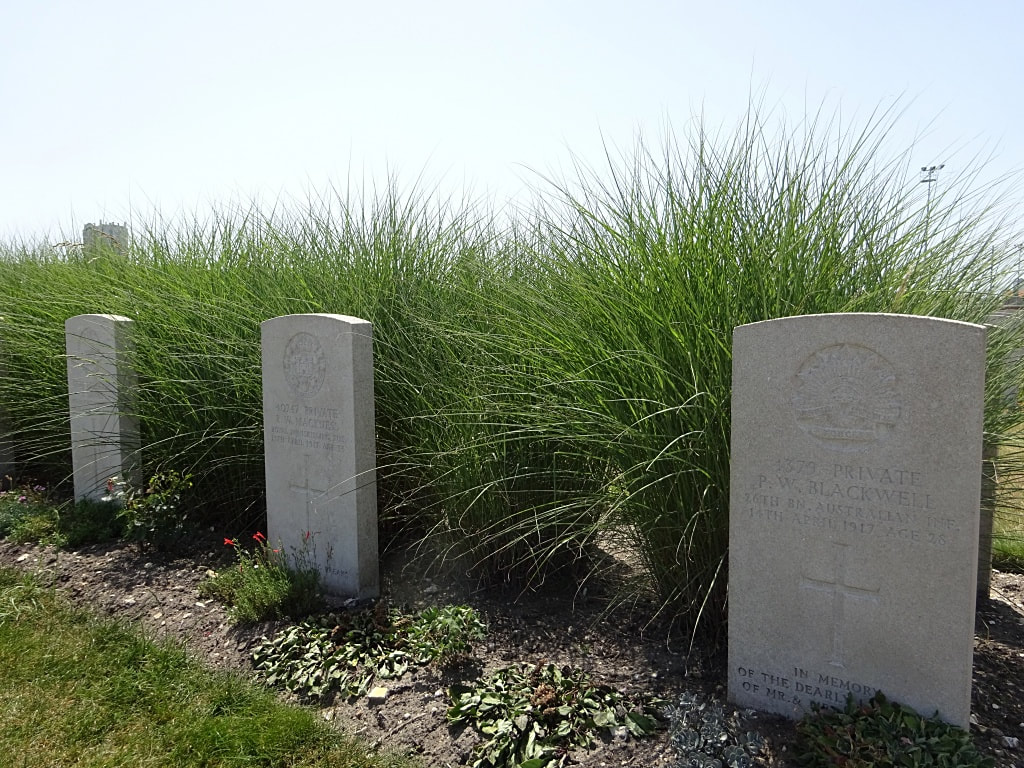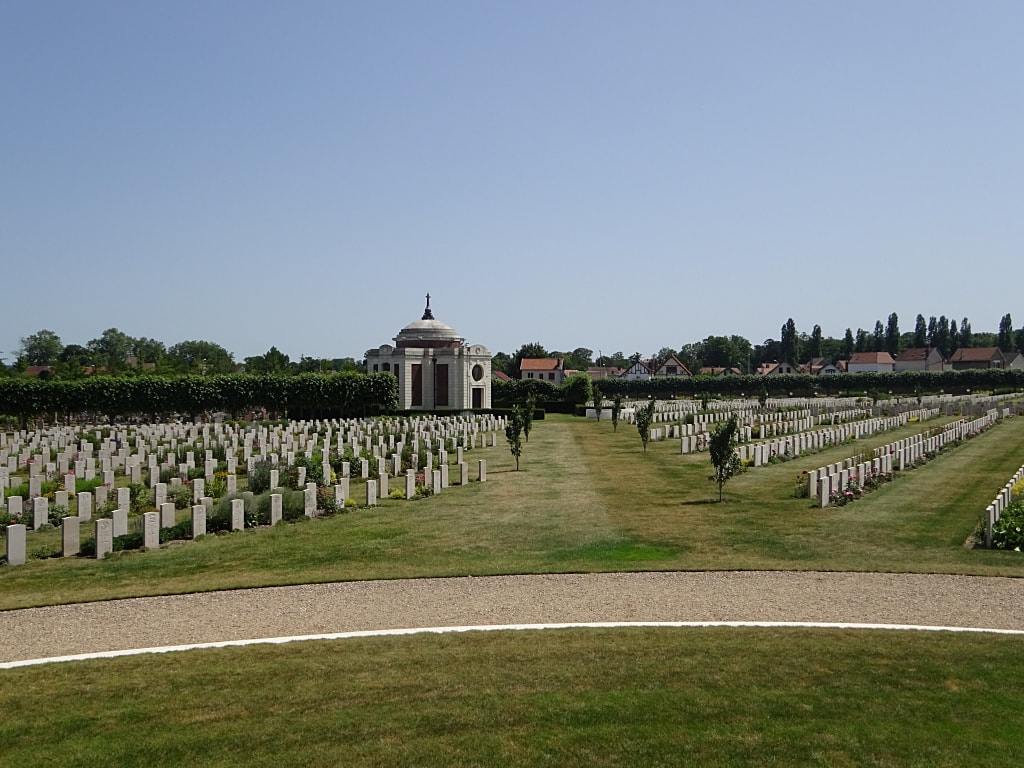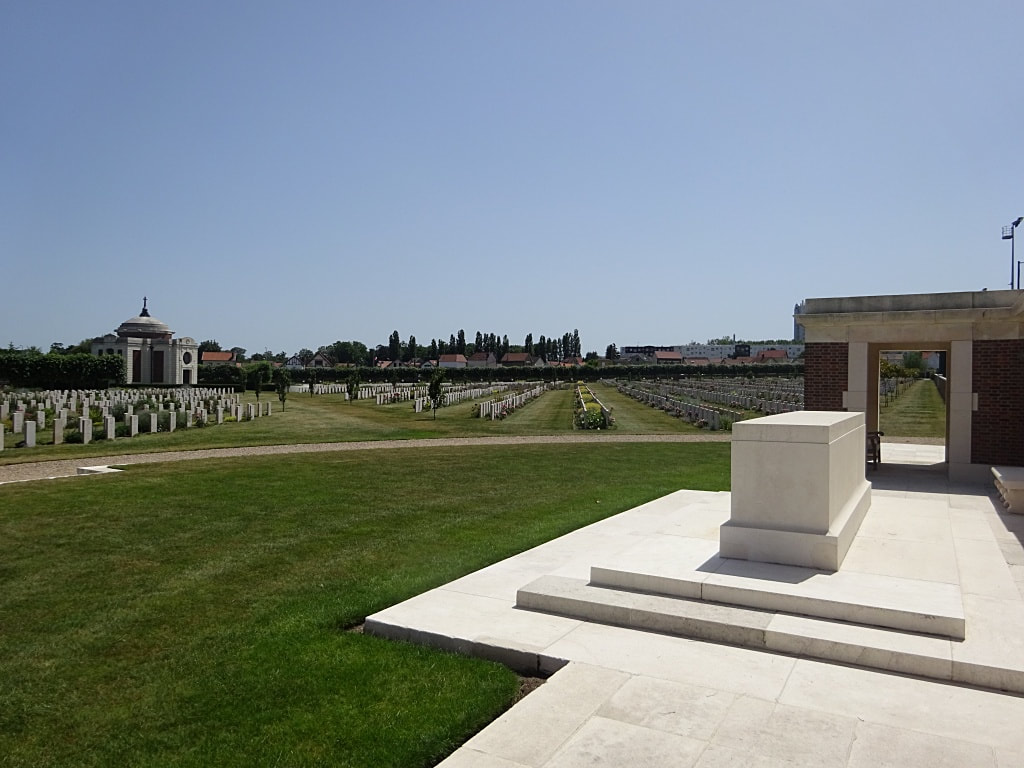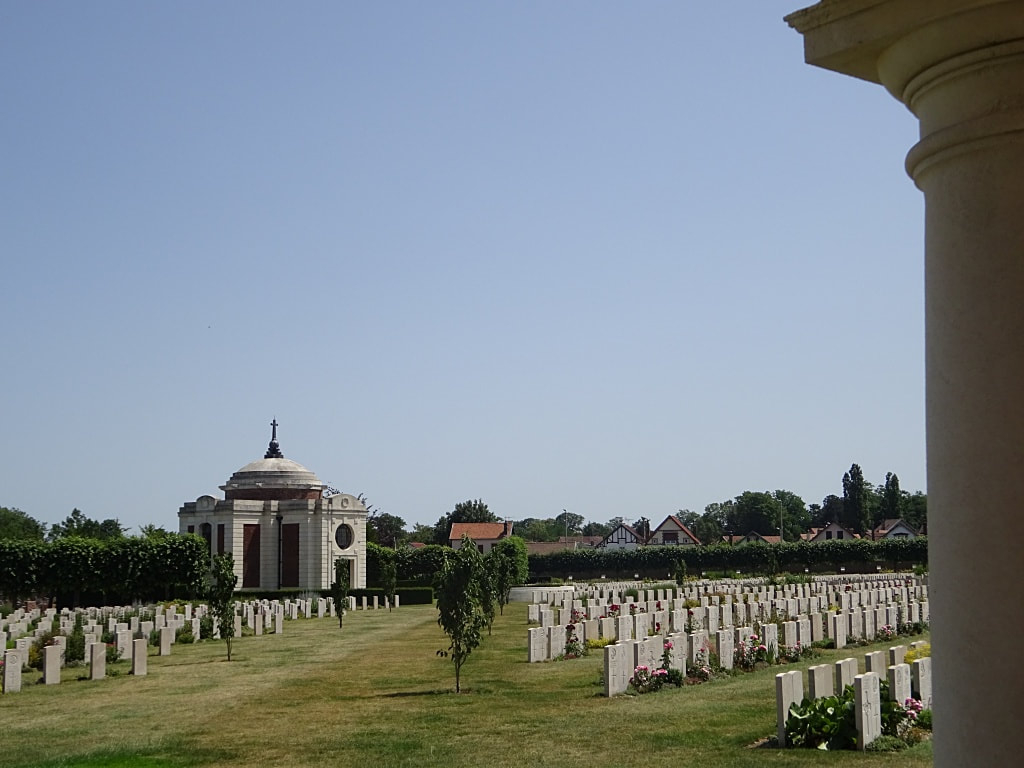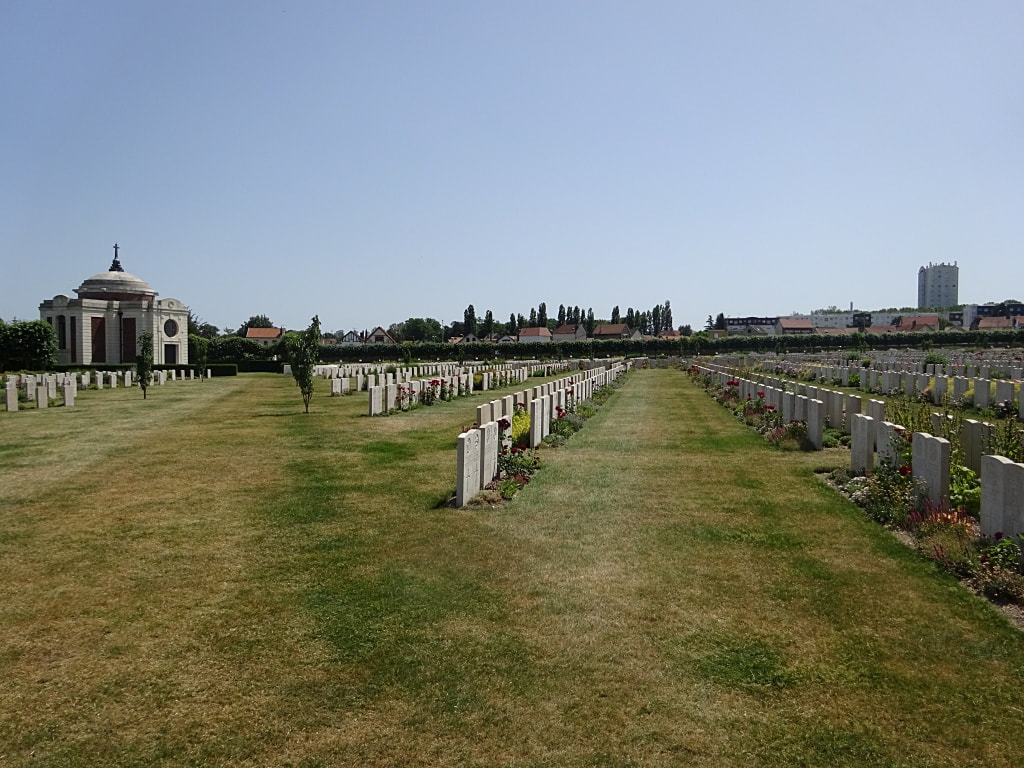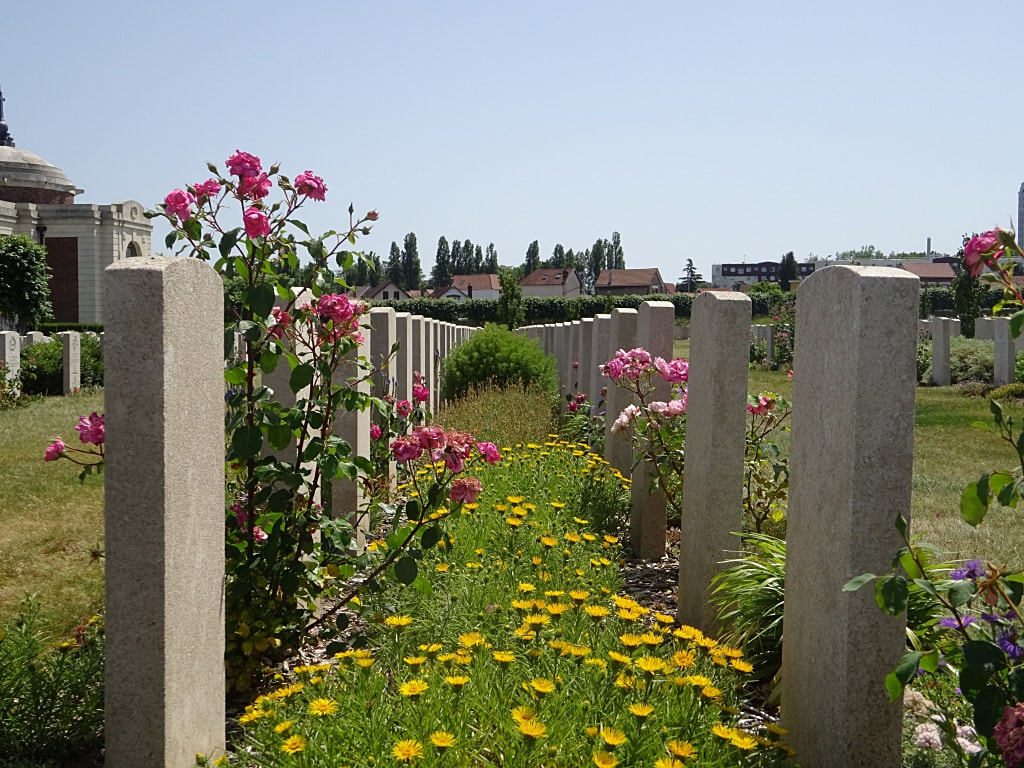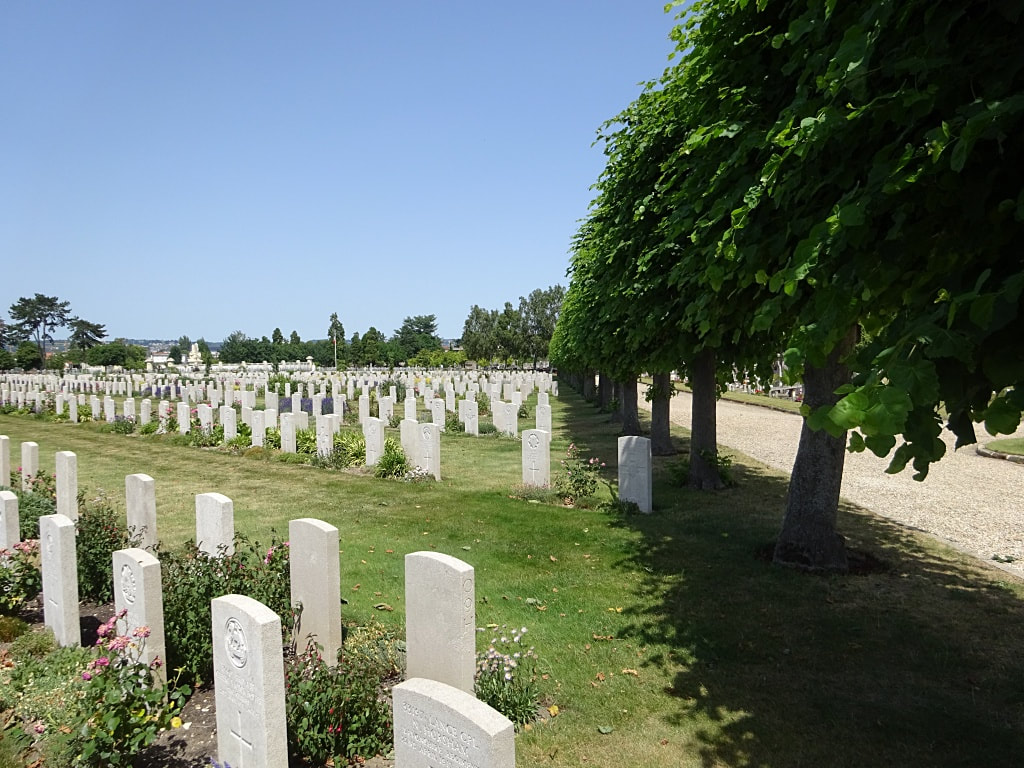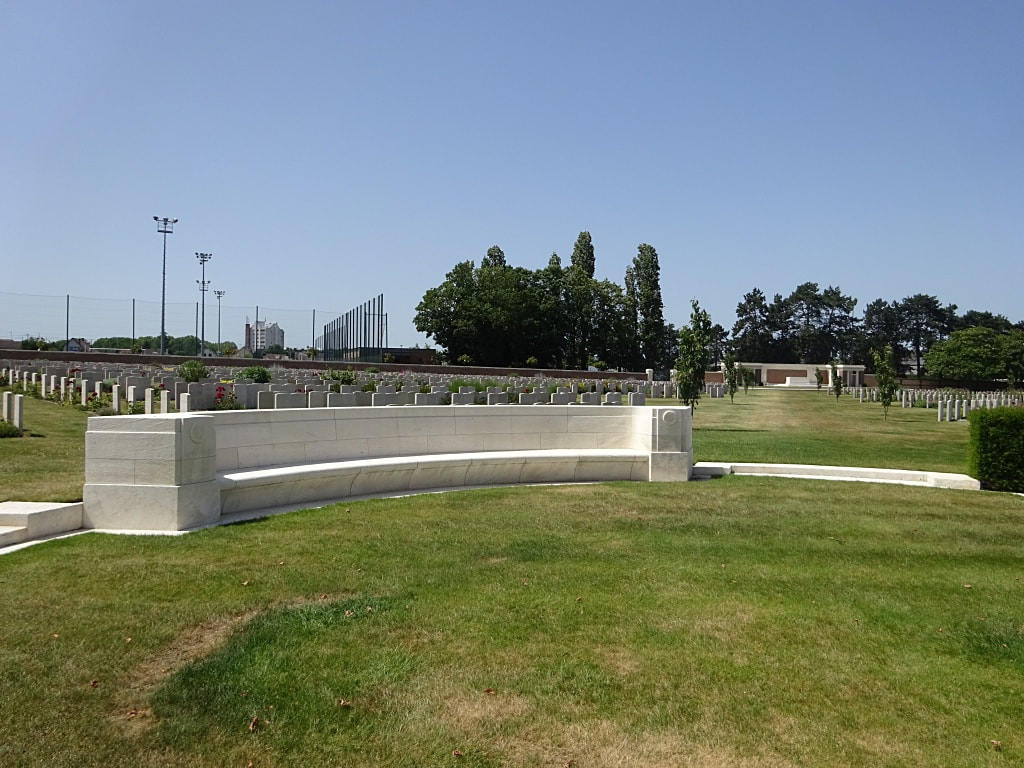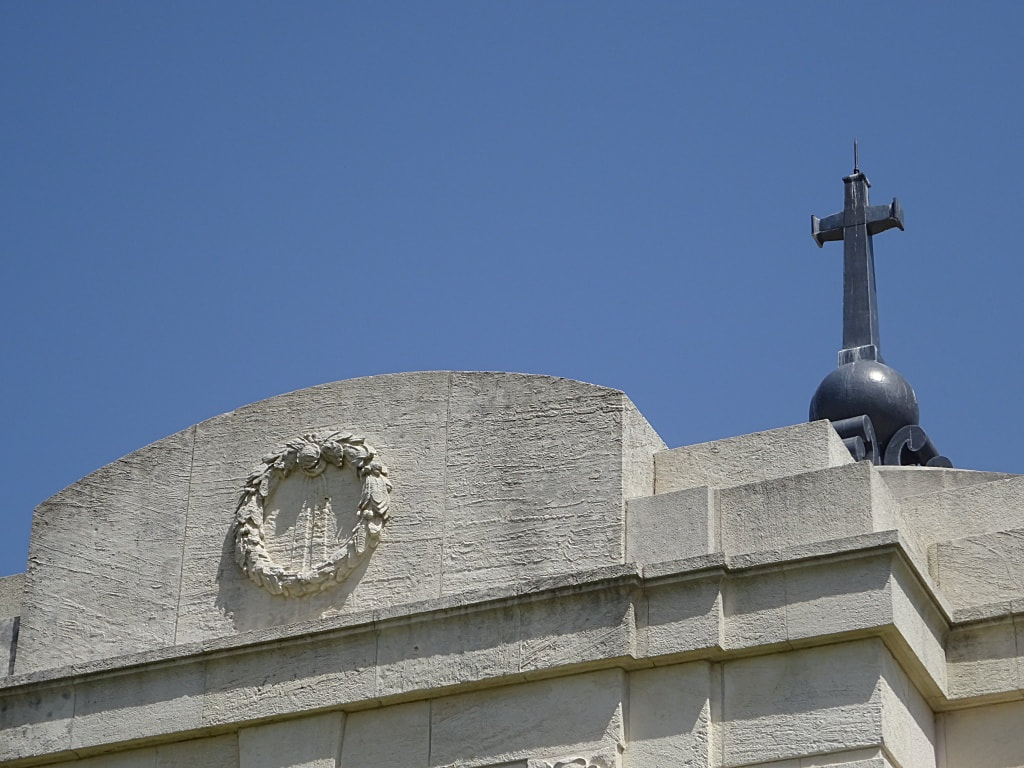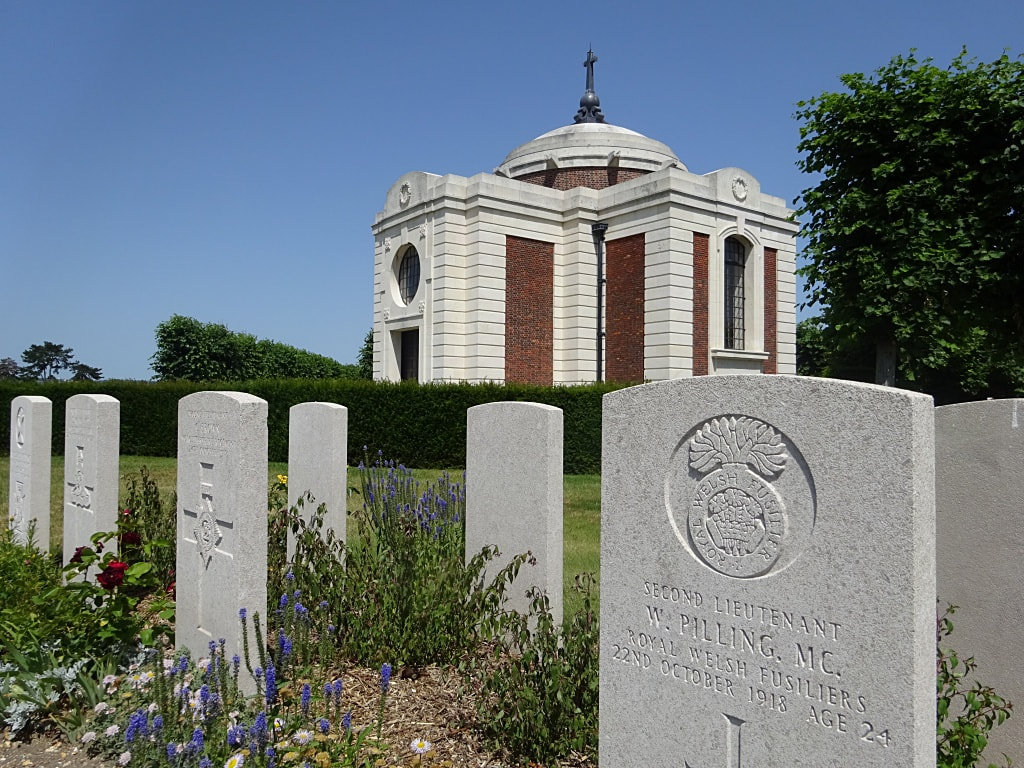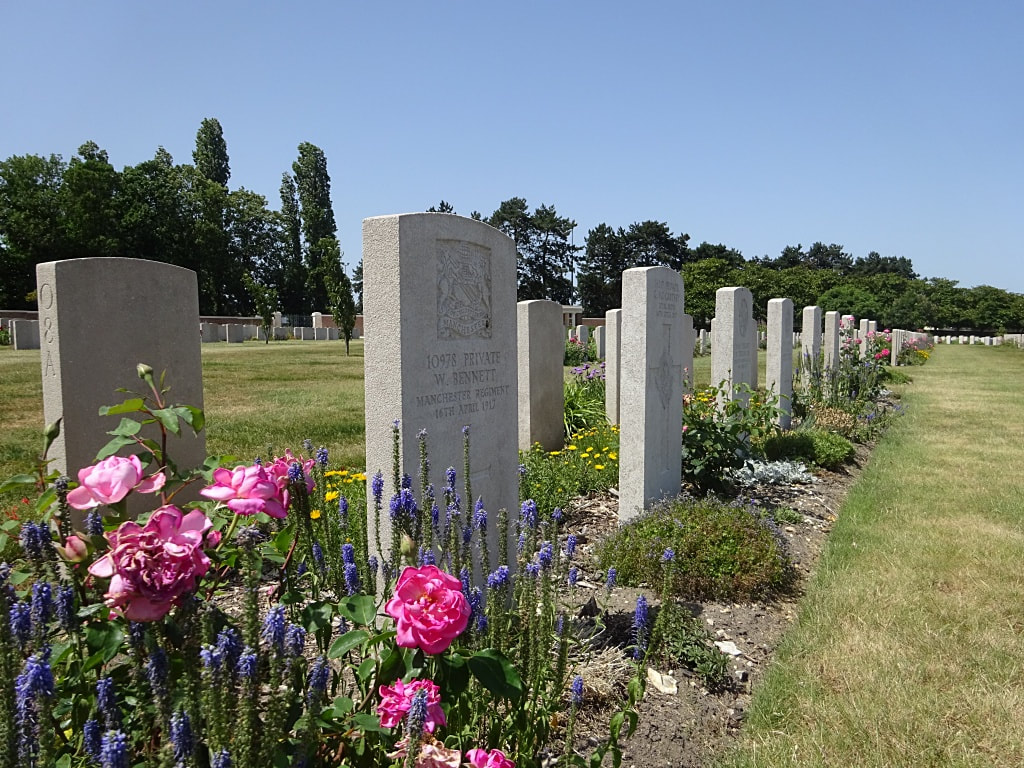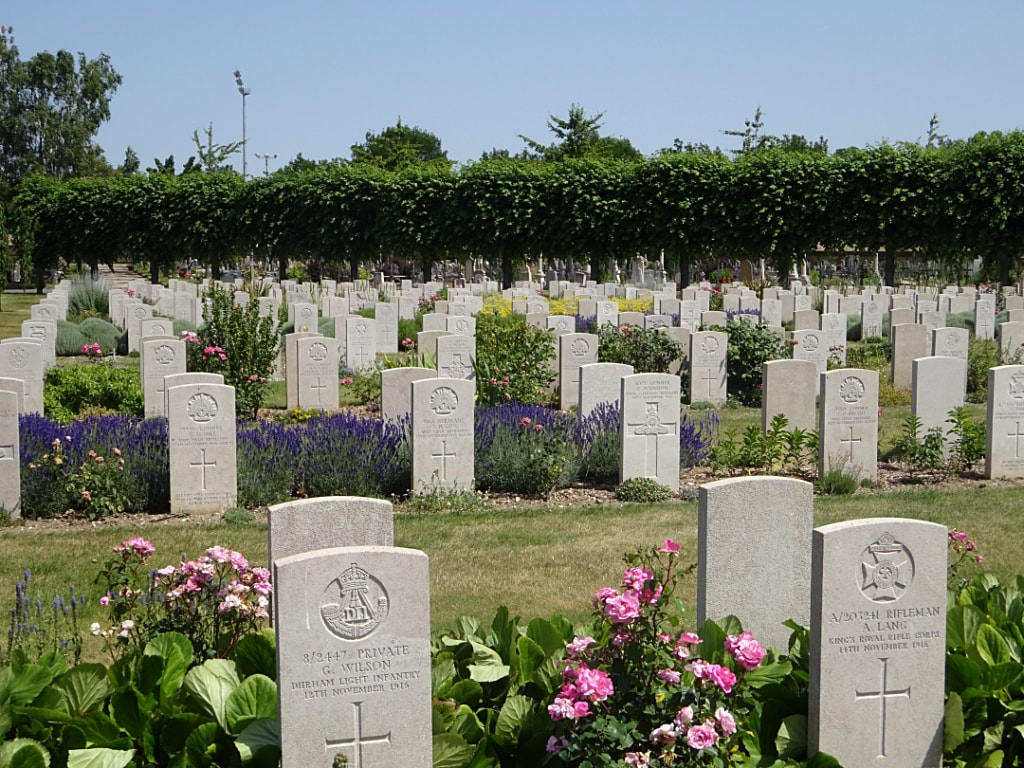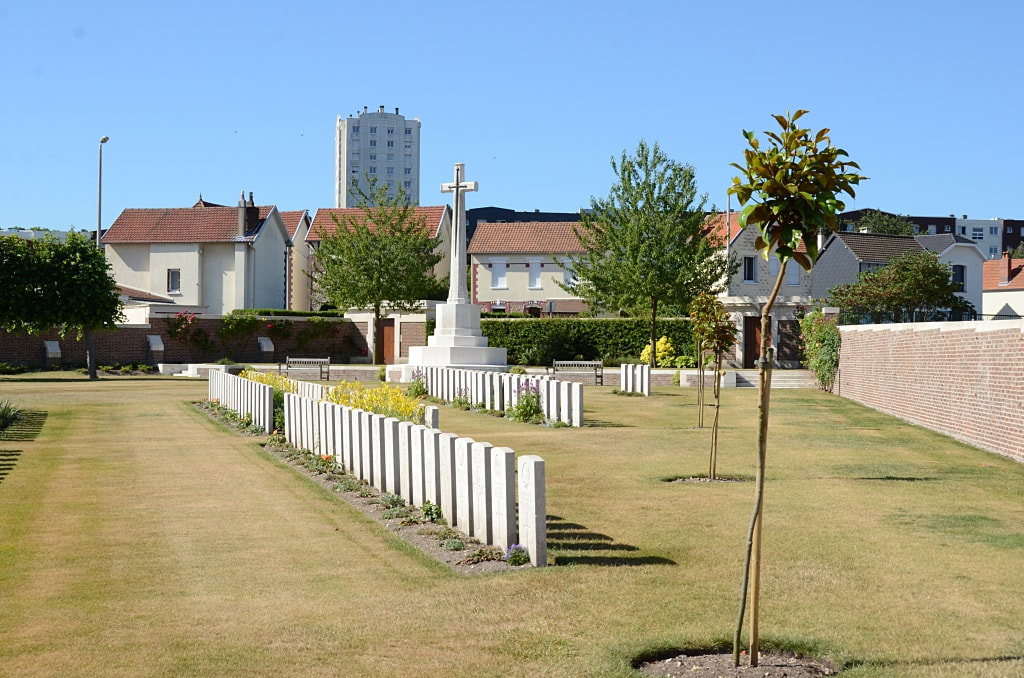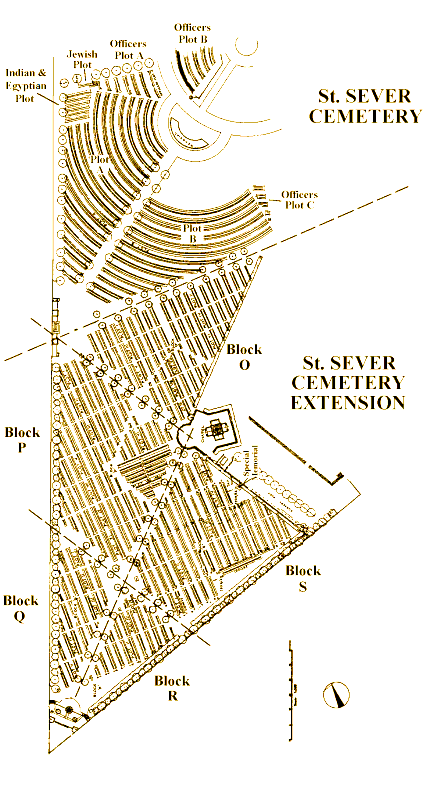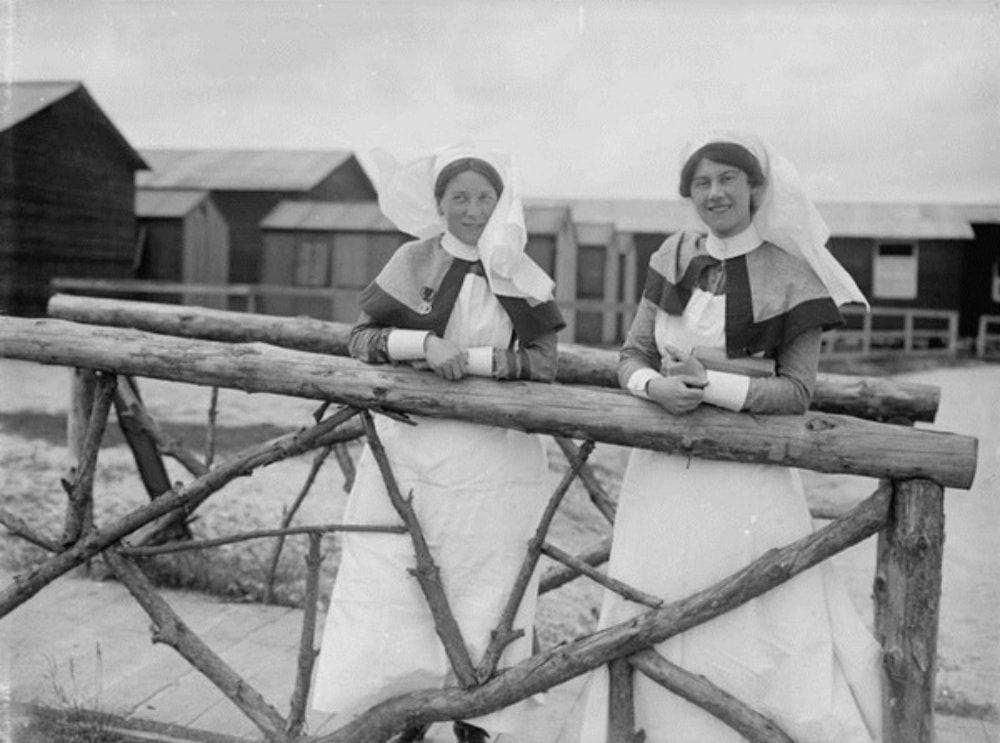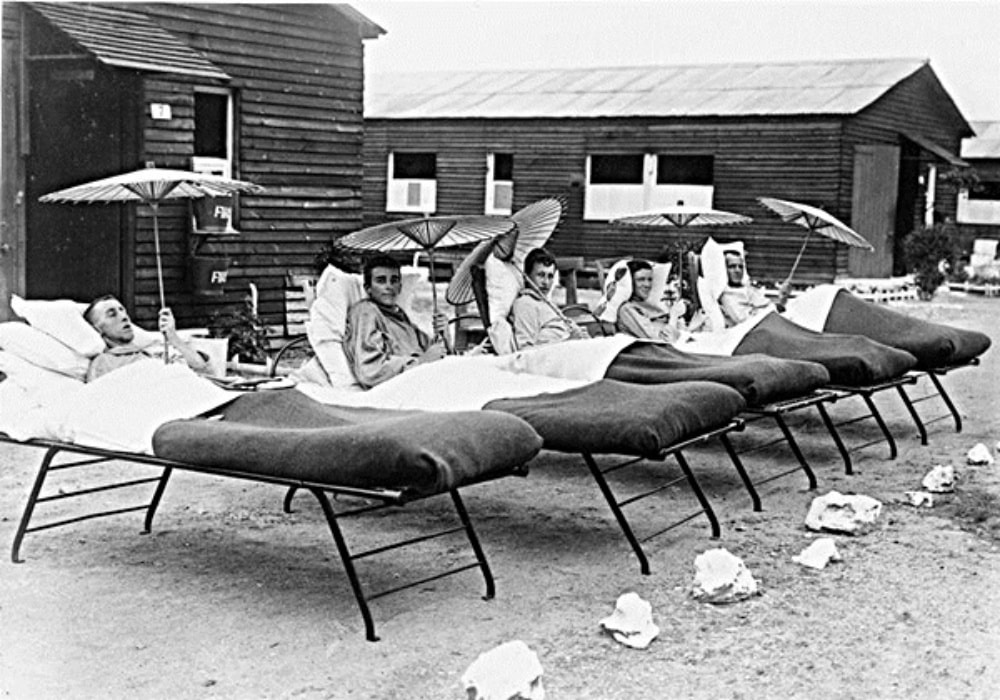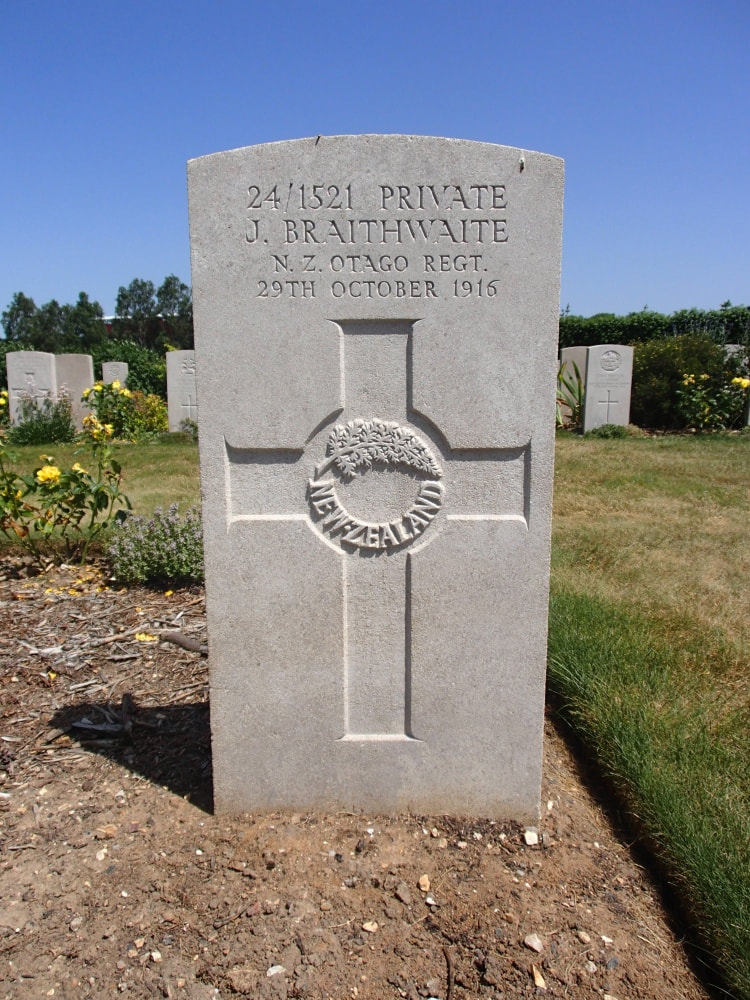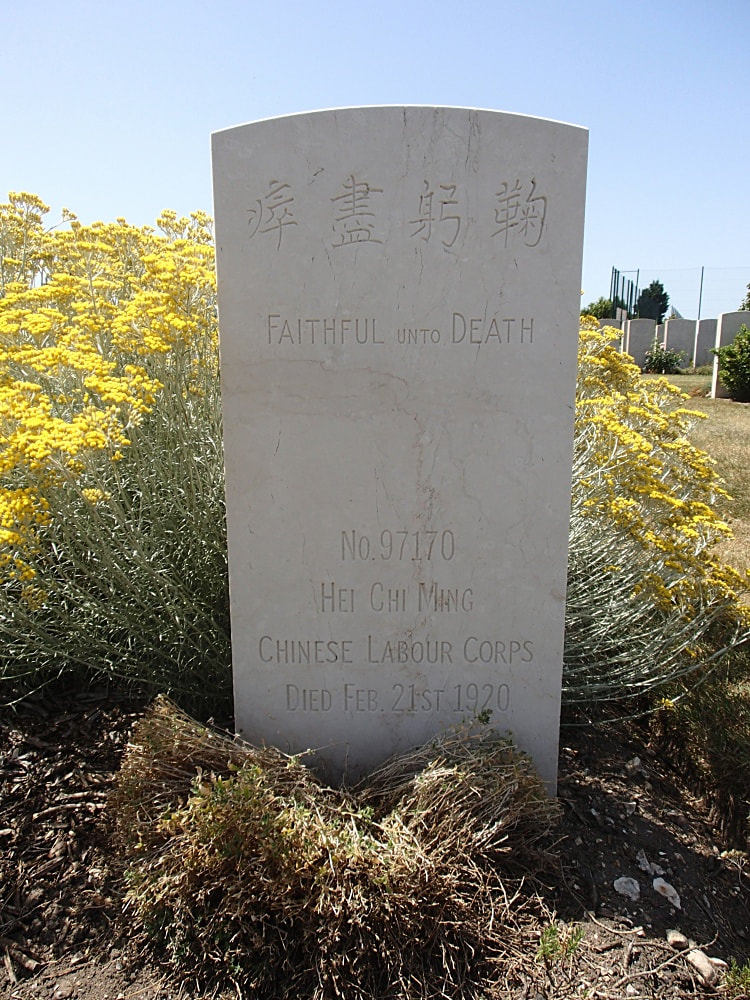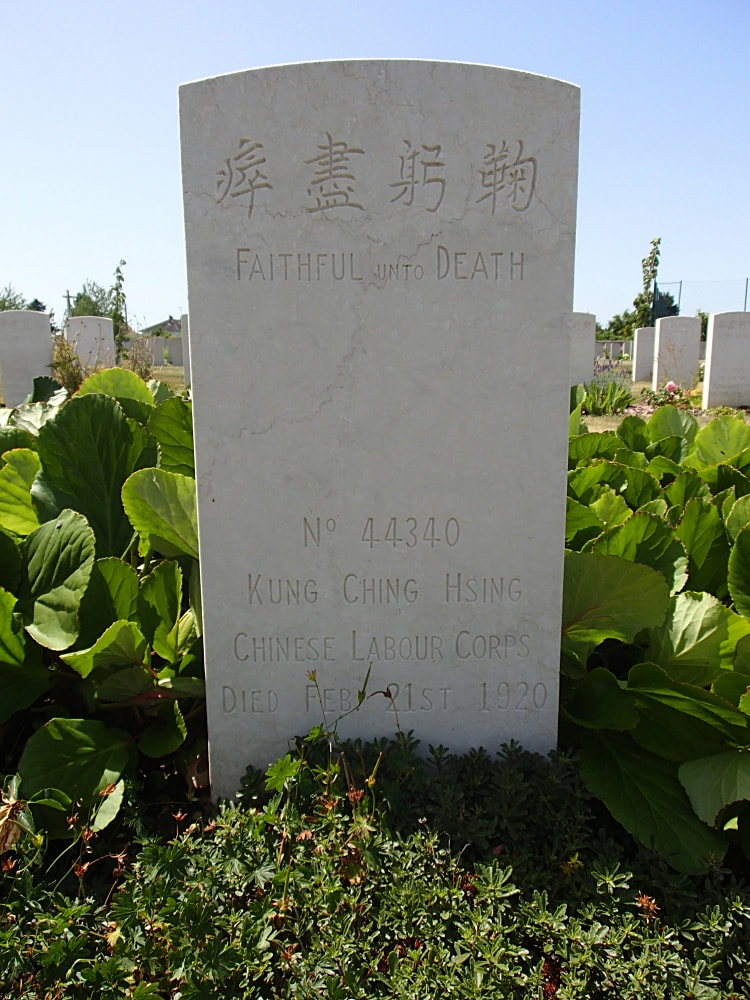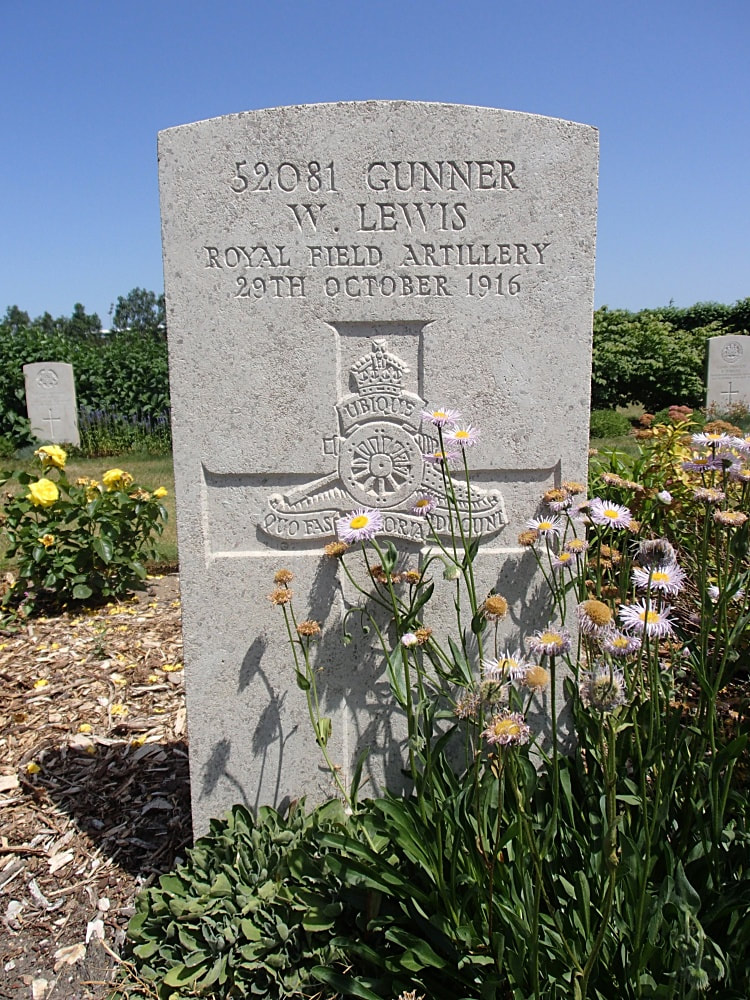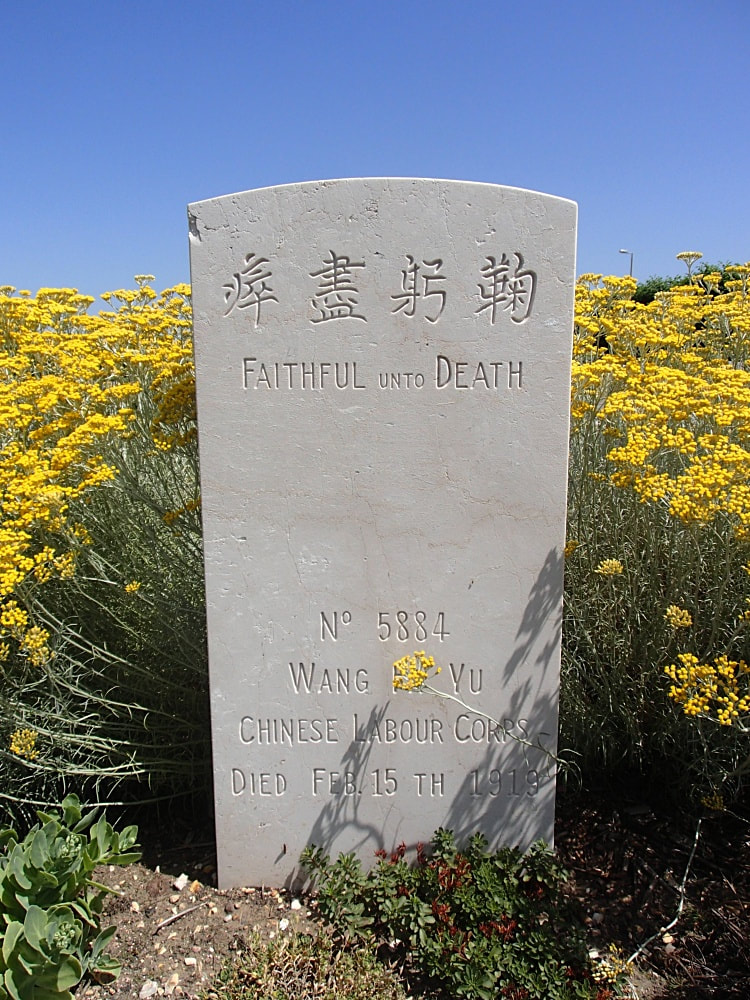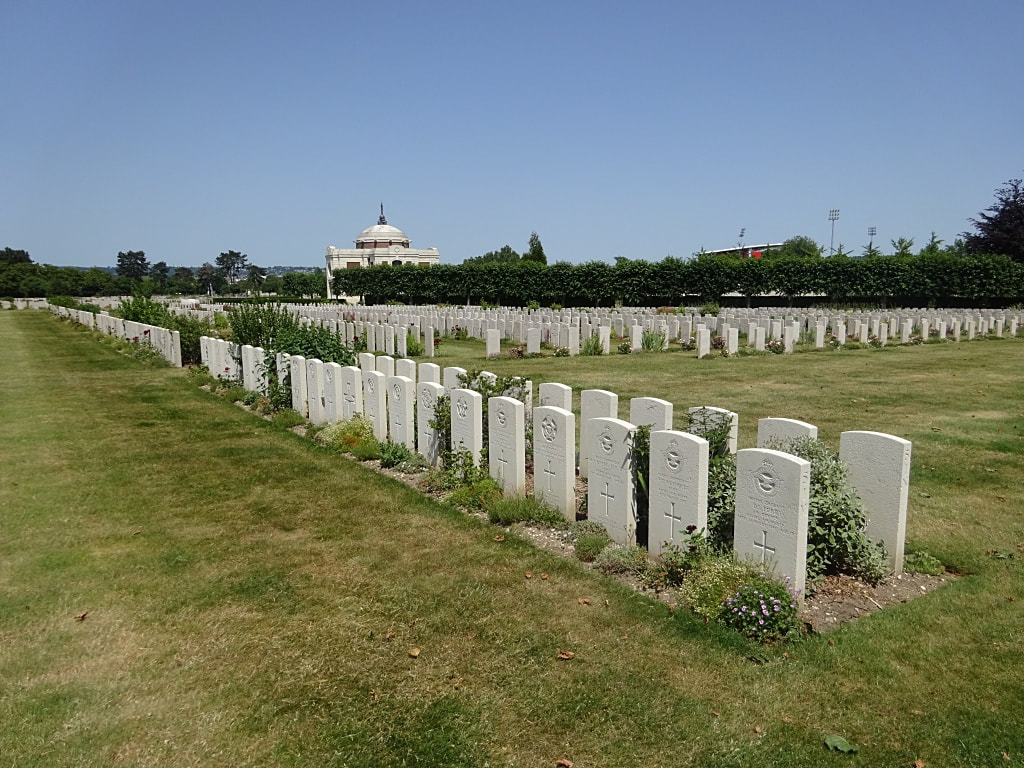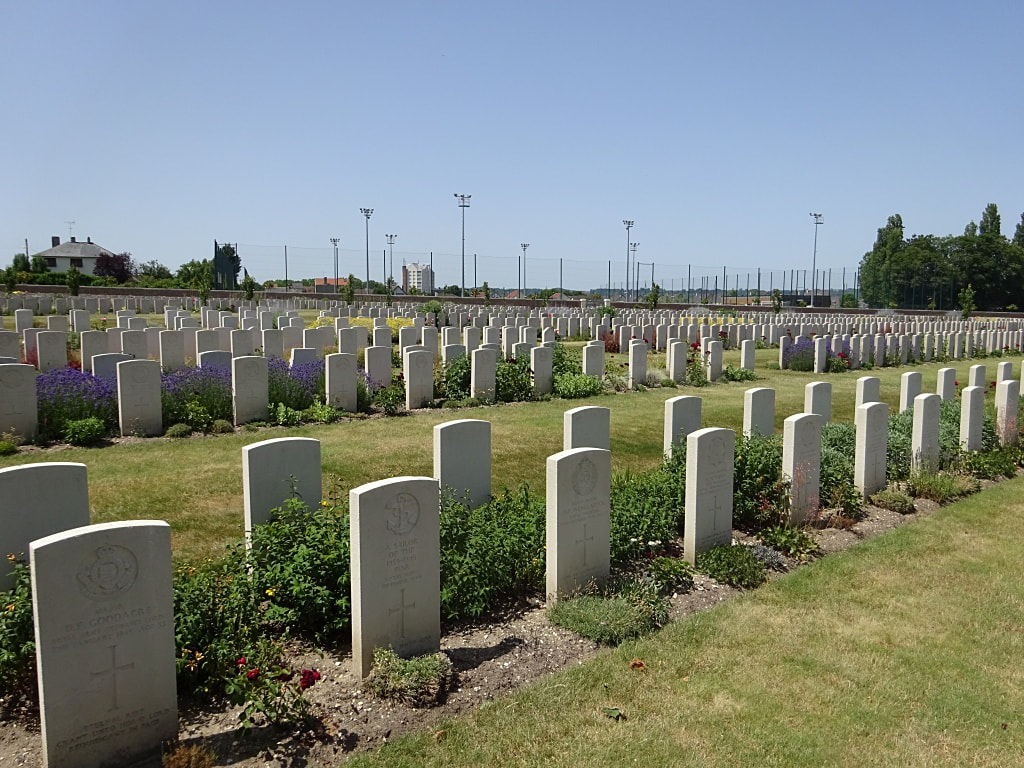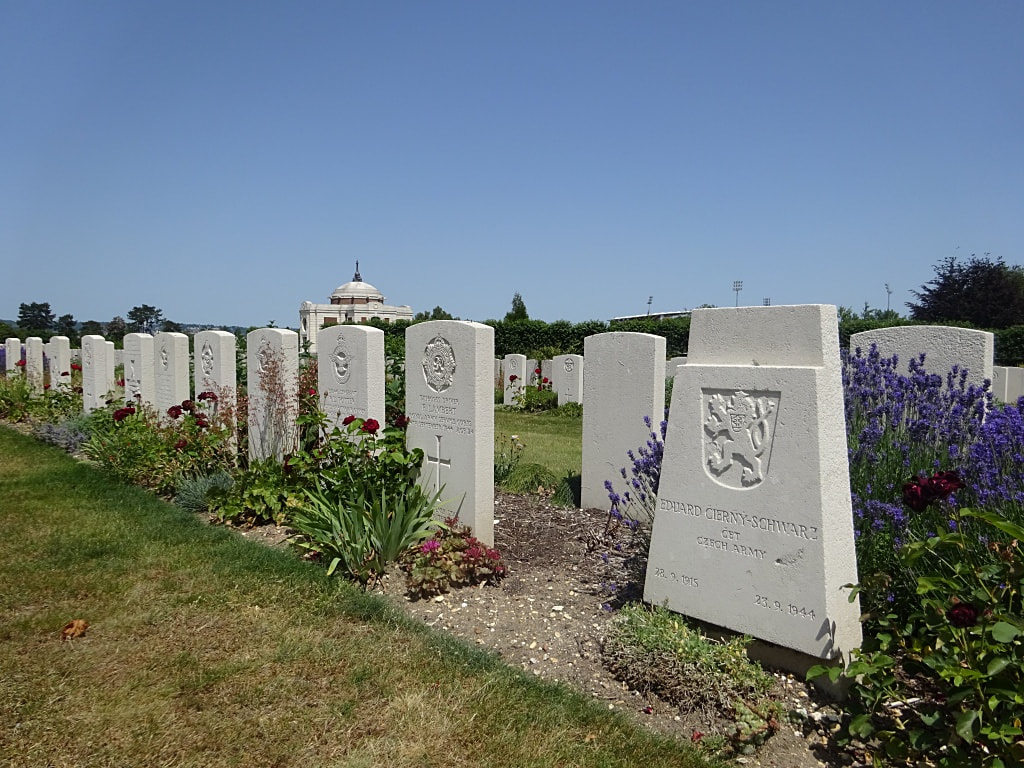ST. SEVER CEMETERY EXTENSION
Rouen
Seine-Maritime
France
GPS Coordinates: Latitude: 49.41035, Longitude: 1.06698
Roll of Honour
Listed by Surname
Location Information
St Sever Cemetery and St. Sever Cemetery Extension are located within a large communal cemetery situated on the eastern edge of the southern Rouen suburbs of Le Grand Quevilly and Le Petit Quevilly.
If approaching Rouen from the north, head for the centre of town and cross over the river Seine, following signs for Caen. Follow this route until you get to the 'Rond Point des Bruyeres' roundabout (next to the football stadium), then take the first exit into the Boulevard Stanislas Girardin. The cemetery is 150 metres down this road on the left.
If approaching Rouen from the south, follow the N138 (Avenue des Canadiens) towards the centre of town. At the 'Rond Point des Bruyeres' roundabout (next to the football stadium), take the fourth exit into the Boulevard Stanislas Girardin. The cemetery is 150 metres down this road on the left.
If arriving on foot, the easiest option is to take the N°7 bus, which runs from Rouges Terres in the north of the city, through the centre (several stops, including the Hôtel de Ville), to Zénith Park Expo in the south. From the city centre, take the bus for Zénith Park Expo, alighting at the Rond-point des Bruyères (sports stadia). From the roundabout, walk WNW into Boulevard Stanislas Girardin. The cemetery entrance is 150 metres down this road on the left.
Visiting Information
OPENING TIMES:
1 March - 1 November:
Monday-Saturday : 0815 - 1745
Sundays/Public Holidays : 0815 - 1745
2 November - 28 February:
Every Day: 0815 - 1645
Historical Information
During the First World War, Commonwealth camps and hospitals were stationed on the southern outskirts of Rouen. A base supply depot and the 3rd Echelon of General Headquarters were also established in the city.
Almost all of the hospitals at Rouen remained there for practically the whole of the war. They included eight general, five stationary, one British Red Cross and one labour hospital, and No. 2 Convalescent Depot. A number of the dead from these hospitals were buried in other cemeteries, but the great majority were taken to the city cemetery of St. Sever. In September 1916, it was found necessary to begin an extension, where the last burial took place in April 1920.
During the Second World War, Rouen was again a hospital centre and the extension was used once more for the burial of Commonwealth servicemen, many of whom died as prisoners of war during the German occupation.
The cemetery extension contains 8,348 Commonwealth burials of the First World War (ten of them unidentified) and in Block "S" there are 328 from the Second World War (18 of them unidentified). There are also 8 Foreign National burials here.
Total Burials: 8,685.
World War One Identified Casualties: United Kingdom 6746, Australia 783, Canada 321, India 270, New Zealand 134, South Africa 84, Italy 4. Total 8,344.
World War One Unidentified Casualties: 10.
World War Two Identified Casualties: United Kingdom 264, Canada 36, Australia 7, New Zealand 3, Poland 2, Czechoslovakia 1. Total 313.
World War Two Unidentified Casualties: 18.
The extension was designed by Sir Reginald Blomfield and Arthur James Scott Hutton
The Rev. Theodore Bailey Hardy, V. C., D. S. O., M. C.
Chaplain 4th Class, Army Chaplains' Dept. Attached 8th Bn. Lincolnshire Regiment, Appointed Chaplain to His Majesty, 17th September 1918. Died 18th October 1918, aged 54. Plot S. V. J. 1.
Appointed Chaplain to His Majesty, 17th Sept., 1918. Son of George and Sarah Richards Hardy, of Exeter; husband of the late Florence Elizabeth Hardy (nee Hastings), of Hutton Roof Vicarage, Kirkby Lonsdale, Westmorland. B.A.
His headstone bears the inscription "Love Never Faileth"
Citation:
An extract from the London Gazette, No. 30790, dated 9th July, 1918, records the following:-"For most conspicuous bravery and devotion to duty on many occasions. Although over 50 years of age, he has, by his fearlessness, devotion to men of his battalion, and quiet unobtrusive manner, won the respect and admiration of the whole division. His marvellous energy and endurance would be remarkable even in a very much younger man, and his valour and devotion are exemplified in the following incidents: An infantry patrol had gone out to attack a previously located enemy post in the ruins of a village, the Reverend Theodore Bailey Hardy (C.F.) being then at company headquarters. Hearing firing, he followed the patrol, and about four hundred yards beyond our front line of posts found an officer of the patrol dangerously wounded. He remained with the officer until he was able to get assistance to bring him in. During this time there was a great deal of firing, and an enemy patrol actually penetrated between the spot at which the officer was lying and our front line and captured three of our men. On a second occasion when an enemy shell exploded in the middle of one of our posts, the Reverend T. B. Hardy at once made his way to the spot, despite the shell and trench mortar fire which was going on at the time, and set to work to extricate the buried men. He succeeded in getting out one man who had been completely buried. He then set to work to extricate a second man, who was found to be dead. During the whole of the time that he was digging out the men this chaplain was in great danger, not only from shell fire, but also because of the dangerous condition of the wall of the building which had been hit by the shell which buried the men. On a third occasion he displayed the greatest devotion to duty when our infantry, after a successful attack, were gradually forced back to their starting trench. After it was believed that all our men had withdrawn from the wood, Chaplain Hardy came out of it, and on reaching an advanced post asked the men to help him to get in a wounded man. Accompanied by a Serjeant he made his way to the spot where the man lay, within ten yards of a pill-box which had been captured in the morning, but was subsequently re-captured and occupied by the enemy. The wounded man was too weak to stand, but between them the chaplain and the Serjeant eventually succeeded in getting him to our lines. Throughout the day the enemy's artillery, machine-gun and trench mortar fire was continuous, and caused many casualties. Notwithstanding, this very gallant chaplain was seen moving quietly amongst the men and tending the wounded, absolutely regardless of his personal safety."
Headstone
Doing their Bit - The Voluntary Aid Detachment
by Janine Lawrence
Over the centuries the history of our country has been littered with governmental mistakes and mishaps. How refreshing then, that in 1908 the new Secretary of State for War, Lord Haldane, undertook reforms in the army which were to have far-reaching effects.
He established a new part-time army of volunteers who were fully-trained soldiers in full-time jobs and who were organised on a county system. This Territorial Force became jokingly known as the 'Saturday Night Soldiers' as the young men who joined were taught to shoulder arms at weekly meetings and drills. They even attended summer camp and many 'Terriers' were at camp when war was declared in August 1914.
In 1909, with unbelievable foresight, the War Office issued a 'Scheme for the Organisation of Voluntary Aid in England and Wales' which recognised the need to provide sufficient medical backup to supplement the Territorial Force in the event of war. Ultimate efficiency would not be realised unless all voluntary aid was co-ordinated and the Territorial Associations were directed to entrust the work to the British Red Cross which had also adopted the county system of organisation. They joined up with the Order of St John of Jerusalem and thus, the organisation known as the Voluntary Aid Detachment was born.
Detachments were divided into those for men and those for women. Men's detachments numbered 56 lead by a commandant and comprising a medical officer, a quartermaster, a pharmacist and four section leaders each responsible for 12 men. They were usually responsible for transport and converting suitable buildings into hospitals and clearing stations and would also act as stretcher-bearers and male nurses if required. After enrolment the men studied first aid and were lectured in the various duties connected with transport and camps.
The women's detachments were less than half the strength of the men. They were also led by a commandant, who could either be male or female and not necessarily a doctor, a quartermaster, a trained nurse as a lady superintendent and 20 women of whom four had to be qualified cooks. It was felt the women's detachments would be better served to the 'less arduous' task of forming railway rest stations where they could prepare and serve meals for sick and wounded soldiers. It was obvious they were seen more as domestic assistants than nurses! However, they were given lectures in first aid, home nursing, hygiene and cookery and were occasionally given training in infirmaries. They were taught to identify suitable buildings for use as temporary hospitals and how to obtain equipment and supplies.
Within a year membership numbered somewhere around 6000 with over 2,500 detachments. These numbers increased considerably after the outbreak of war in 1914 and numbers rose to over 74,000, two-thirds of whom were women and girls.
As men were called away to answer their country's call it fell upon the women to fill their shoes in whatever way they could. Initially it was mostly middle-class women who were eager to 'do their bit' and they took on roles such as ambulance drivers, welfare officers, fundraisers, civil defence workers and even letter writers for the illiterate. It is interesting to note that the novelist, Agatha Christie was a VAD and worked in a hospital pharmacy where she learned about poisons!
The military authorities were reluctant at this early stage to accept VADs on the front line, perhaps thinking that the battlefield was no place for a woman. However, this restriction was lifted in 1915 and women volunteers over the age of twenty three and with more than three months experience were allowed to go to the Western Front, Gallipoli and Mesopotamia. Eventually VAD's were also sent to the Eastern Front.
Before the outbreak of war some VADs had taken short nursing courses for which they were awarded certificates. Qualified nurses had undertaken three years training and were understandably suspicious of these short courses, referring to the volunteers as 'ignorant amateurs'. Quarrels broke out and there are even reports of open conflict before the new spirit of unity in time of war was felt and working together for mutual benefit was the order of the day.
The VAD's became very active in the war effort using influence to transport themselves to the conflicts in France to care for the sick and wounded and thus carving out for themselves a clear role as nurses or orderlies in hospitals at home and in the theatres of war. By 1916 their numbers had increased to 80,000.
In 1917 clear regulations were laid down by the British Red Cross which governed the employment of nursing VAD's in military hospitals. Age limits were specified and volunteers should be between 21 and 48 years of age for home service and 23 and 42 for foreign. They were to be appointed for one month on probation during which time they were assessed for suitability by the matron. They then had to sign an agreement to serve for six months or the duration of the war, at home or abroad. Salary would be £20 per annum rising to £22.10.0 for those who signed on for another six months at the end of their current contract. Increments of a further £2.10.0 would be paid every six months until probationers reached the maximum of £30 per annum.
It was also laid down that VAD's should work under fully trained nurses with duties including sweeping, dusting, polishing, cleaning, washing patients' crockery, sorting linen and any nursing duties allotted by the matron.
Meanwhile, VAD hospitals were being set up in Blighty and were mostly located in large houses loaned for the purpose by their owners. Gustard Wood at Wheathampstead and The Bury at King's Walden are just two Hertfordshire premises used. The Council School in Royston and the former mental hospital, Napsbury in Colney Heath are examples of institutes put into service.
These hospitals received the sum of three shillings per day per patient from the War Office and were expected to raise additional funds themselves. As everyone was keen to be seen to help the war effort this was not difficult and local newspapers regularly featured lists of donations received - obviously anonymity did not seem to be the case!
Many women returning home after the conflict ended undertook formal nurse training and registration with the General Nursing Council. Others tried to pick up the threads of their former lives. What must be certain is that life could never have been the same for any of them again. The sight, smell and fear of war must have been imprinted on every mind bringing about a change in the lives of women which would grow and grow over the following years.
Our thanks to Janine Lawrence for permission to use this article.
© Janine Lawrence
by Janine Lawrence
Over the centuries the history of our country has been littered with governmental mistakes and mishaps. How refreshing then, that in 1908 the new Secretary of State for War, Lord Haldane, undertook reforms in the army which were to have far-reaching effects.
He established a new part-time army of volunteers who were fully-trained soldiers in full-time jobs and who were organised on a county system. This Territorial Force became jokingly known as the 'Saturday Night Soldiers' as the young men who joined were taught to shoulder arms at weekly meetings and drills. They even attended summer camp and many 'Terriers' were at camp when war was declared in August 1914.
In 1909, with unbelievable foresight, the War Office issued a 'Scheme for the Organisation of Voluntary Aid in England and Wales' which recognised the need to provide sufficient medical backup to supplement the Territorial Force in the event of war. Ultimate efficiency would not be realised unless all voluntary aid was co-ordinated and the Territorial Associations were directed to entrust the work to the British Red Cross which had also adopted the county system of organisation. They joined up with the Order of St John of Jerusalem and thus, the organisation known as the Voluntary Aid Detachment was born.
Detachments were divided into those for men and those for women. Men's detachments numbered 56 lead by a commandant and comprising a medical officer, a quartermaster, a pharmacist and four section leaders each responsible for 12 men. They were usually responsible for transport and converting suitable buildings into hospitals and clearing stations and would also act as stretcher-bearers and male nurses if required. After enrolment the men studied first aid and were lectured in the various duties connected with transport and camps.
The women's detachments were less than half the strength of the men. They were also led by a commandant, who could either be male or female and not necessarily a doctor, a quartermaster, a trained nurse as a lady superintendent and 20 women of whom four had to be qualified cooks. It was felt the women's detachments would be better served to the 'less arduous' task of forming railway rest stations where they could prepare and serve meals for sick and wounded soldiers. It was obvious they were seen more as domestic assistants than nurses! However, they were given lectures in first aid, home nursing, hygiene and cookery and were occasionally given training in infirmaries. They were taught to identify suitable buildings for use as temporary hospitals and how to obtain equipment and supplies.
Within a year membership numbered somewhere around 6000 with over 2,500 detachments. These numbers increased considerably after the outbreak of war in 1914 and numbers rose to over 74,000, two-thirds of whom were women and girls.
As men were called away to answer their country's call it fell upon the women to fill their shoes in whatever way they could. Initially it was mostly middle-class women who were eager to 'do their bit' and they took on roles such as ambulance drivers, welfare officers, fundraisers, civil defence workers and even letter writers for the illiterate. It is interesting to note that the novelist, Agatha Christie was a VAD and worked in a hospital pharmacy where she learned about poisons!
The military authorities were reluctant at this early stage to accept VADs on the front line, perhaps thinking that the battlefield was no place for a woman. However, this restriction was lifted in 1915 and women volunteers over the age of twenty three and with more than three months experience were allowed to go to the Western Front, Gallipoli and Mesopotamia. Eventually VAD's were also sent to the Eastern Front.
Before the outbreak of war some VADs had taken short nursing courses for which they were awarded certificates. Qualified nurses had undertaken three years training and were understandably suspicious of these short courses, referring to the volunteers as 'ignorant amateurs'. Quarrels broke out and there are even reports of open conflict before the new spirit of unity in time of war was felt and working together for mutual benefit was the order of the day.
The VAD's became very active in the war effort using influence to transport themselves to the conflicts in France to care for the sick and wounded and thus carving out for themselves a clear role as nurses or orderlies in hospitals at home and in the theatres of war. By 1916 their numbers had increased to 80,000.
In 1917 clear regulations were laid down by the British Red Cross which governed the employment of nursing VAD's in military hospitals. Age limits were specified and volunteers should be between 21 and 48 years of age for home service and 23 and 42 for foreign. They were to be appointed for one month on probation during which time they were assessed for suitability by the matron. They then had to sign an agreement to serve for six months or the duration of the war, at home or abroad. Salary would be £20 per annum rising to £22.10.0 for those who signed on for another six months at the end of their current contract. Increments of a further £2.10.0 would be paid every six months until probationers reached the maximum of £30 per annum.
It was also laid down that VAD's should work under fully trained nurses with duties including sweeping, dusting, polishing, cleaning, washing patients' crockery, sorting linen and any nursing duties allotted by the matron.
Meanwhile, VAD hospitals were being set up in Blighty and were mostly located in large houses loaned for the purpose by their owners. Gustard Wood at Wheathampstead and The Bury at King's Walden are just two Hertfordshire premises used. The Council School in Royston and the former mental hospital, Napsbury in Colney Heath are examples of institutes put into service.
These hospitals received the sum of three shillings per day per patient from the War Office and were expected to raise additional funds themselves. As everyone was keen to be seen to help the war effort this was not difficult and local newspapers regularly featured lists of donations received - obviously anonymity did not seem to be the case!
Many women returning home after the conflict ended undertook formal nurse training and registration with the General Nursing Council. Others tried to pick up the threads of their former lives. What must be certain is that life could never have been the same for any of them again. The sight, smell and fear of war must have been imprinted on every mind bringing about a change in the lives of women which would grow and grow over the following years.
Our thanks to Janine Lawrence for permission to use this article.
© Janine Lawrence
Shot at Dawn
24/1521 Private Jack Braithwaite, 2nd Bn. Otago Regiment (N. Z. E. F.), executed for mutiny on 29th October 1916. Plot O. 1. K. 10. Son of Mrs. M. Blaithwaite, of Auckland, New Zealand.
An ex-journalist, he was a serving prisoner at Blargies Military Prison Camp at Abancourt, near Rouen, having been convicted 3 times at court martial since he arrived in Egypt in Feb 1916.
On 28 Aug 1916, an Australian, Pte Little was repeatedly abusive to the NCOs & his arrest was ordered. On Little’s way to the guard-tent, cursing, demanding justice & also ‘his dinner’, Braithwaite intervened, dragging Little away from the arresting officer, Staff Sergt Shearing, & taking him to his, Braithwaite’s tent. It was feared that the Anzac prisoners might attack the British guards: 3 other Australians moved in, preventing Shearing from getting to Little.
At trial, Braithwaite claimed to have been shielding Little from more trouble & was trying to calm him down. However the 5 British officers on the bench found Braithwaite (& the other 3 defendants) Guilty of mutiny.
Despite Braithwaite’s plea in mitigation: ‘….. I have made a serious mess of things, & where I came to win honour & glory, I have only won shame, dishonour & everlasting disgrace’, he was sentenced to death, along with the 3 co-defendants. Despite a recommendation to mercy for all from the Inspector General of Communications, sentence on Braithwaite was confirmed, with commutation to 2 years’ imprisonment with hard labour for the remaining defendants. (Corns, pp.381,388-389)
52081 Gunner William Lewis, 124th Brigade, Royal Field Artillery, executed for mutiny on 29th October 1916. Plot O. 1. M. 8. Son of Mrs. Jane Lewis, of 21 North Junction Street, Leith.
After lunch on 14 Aug 1916, at Blargies Military Prison Camp at Abancourt near Rouen, a large number of British prisoners was assembled for a work party, but some of them refused orders to march off. After the biddable prisoners had complied, the remaining group was asked by Sgt Major Gill: ‘What is the matter ?’. They began shouting & demanding the removal of chains that had been placed on some prisoners as extra punishment for attempting to escape. Gill ordered anyone refusing to work to take one pace forward: the whole group, numbering 67 men, did so.
Capt Barker was called & said complaints could be lodged in the morning, & meanwhile ordered the men to get back to work. Lewis stepped forward & repeated, in an insubordinate manner, the demand about the chains, being supported by another prisoner.
Barker ordered those willing to work to step forward. None did so, Lewis shouting out: ‘Stand still’ /‘Stand Fast’. The Captain then summoned up an armed squad, with bayonets fixed, & directed the whole group to be handcuffed, one at a time. A violent struggle ensued as the prisoners refused. When one prisoner, on whom Sgt Aves was using unnecessary force, screamed & fainted, the guards were rushed, as one of the group shouted: ‘Let’s do the buggers in’. Lewis & 2 others shouted to Aves to desist. When he refused, they said: ‘Fuck Captain Barker’s orders….you’ll take your orders, or we’ll murder you, you fucking bastard’, or words to that effect.
Lewis & one other led the mutineers in a rush towards the guards with their drawn revolvers, shouting: ‘Shoot, we are not bloody well afraid’. Capt Barker now ordered the handcuffing to stop & the men to move to another part of the camp.
Lewis & 6 others were tried for mutiny from 5 to 9 Oct 1916 at Rouen.
In his defence, Lewis said that — far from being the ringleader, as prosecution witnesses had alleged — he had been asked to speak on behalf of the group by Sgt Gill, at the request of Capt Barker who could not understand all the people shouting at once; &, further, that Sgt Aves had later in the afternoon pleaded with him to return to work; & that he had declined to be spokesman for the group, though he said that he had spelled out to Aves the very real grievances of the men in the appalling conditions in the camp.
The Captain who acted as the prisoners’ friend addressed the court, laying great stress on the hellhole that was Blargies, claiming that some of the accused had been ‘deliberately picked out by certain camp staff to act as spokesmen, thus constituting them as ringleaders….’; & that such a role had not been established against Lewis.
All 7 defendants were convicted of mutiny, & — bar one (the Private who had suffered at the hands of Sgt Aves) — sentenced to death.
Lewis’s record of service showed that he had been court-martialled in June 1915, when he received a suspended sentence of 6 months’ imprisonment with hard labour; & again earlier in 1916, when 12 months’ imprisonment was imposed for theft. Commutation was recommended of all the death sentences, Haig confirming that on Lewis. (Corns, pp.381-387)
97170 Coolie Chi Ming Hei, Chinese Labour Corps, executed for murder on 21st February 1920. Plot S. 1. F. 1.
44340 Coolie Ch'ing Hsing K'ung, Chinese Labour Corps, executed for murder on 21st February 1920. Plot S. 1. F. 6.
Both of the above arrived in France in mid-1917; & were executed together at Rouen, attended by 2 officers from the local detention hospital.(Putkowski,p.270)
5884 Coolie Fa Yu Wan, Chinese Labour Corps, executed for murder on 15th February 1919. Plot S. 1. E. 2. He was executed at Rouen. (Putkowski,p.264)
24/1521 Private Jack Braithwaite, 2nd Bn. Otago Regiment (N. Z. E. F.), executed for mutiny on 29th October 1916. Plot O. 1. K. 10. Son of Mrs. M. Blaithwaite, of Auckland, New Zealand.
An ex-journalist, he was a serving prisoner at Blargies Military Prison Camp at Abancourt, near Rouen, having been convicted 3 times at court martial since he arrived in Egypt in Feb 1916.
On 28 Aug 1916, an Australian, Pte Little was repeatedly abusive to the NCOs & his arrest was ordered. On Little’s way to the guard-tent, cursing, demanding justice & also ‘his dinner’, Braithwaite intervened, dragging Little away from the arresting officer, Staff Sergt Shearing, & taking him to his, Braithwaite’s tent. It was feared that the Anzac prisoners might attack the British guards: 3 other Australians moved in, preventing Shearing from getting to Little.
At trial, Braithwaite claimed to have been shielding Little from more trouble & was trying to calm him down. However the 5 British officers on the bench found Braithwaite (& the other 3 defendants) Guilty of mutiny.
Despite Braithwaite’s plea in mitigation: ‘….. I have made a serious mess of things, & where I came to win honour & glory, I have only won shame, dishonour & everlasting disgrace’, he was sentenced to death, along with the 3 co-defendants. Despite a recommendation to mercy for all from the Inspector General of Communications, sentence on Braithwaite was confirmed, with commutation to 2 years’ imprisonment with hard labour for the remaining defendants. (Corns, pp.381,388-389)
52081 Gunner William Lewis, 124th Brigade, Royal Field Artillery, executed for mutiny on 29th October 1916. Plot O. 1. M. 8. Son of Mrs. Jane Lewis, of 21 North Junction Street, Leith.
After lunch on 14 Aug 1916, at Blargies Military Prison Camp at Abancourt near Rouen, a large number of British prisoners was assembled for a work party, but some of them refused orders to march off. After the biddable prisoners had complied, the remaining group was asked by Sgt Major Gill: ‘What is the matter ?’. They began shouting & demanding the removal of chains that had been placed on some prisoners as extra punishment for attempting to escape. Gill ordered anyone refusing to work to take one pace forward: the whole group, numbering 67 men, did so.
Capt Barker was called & said complaints could be lodged in the morning, & meanwhile ordered the men to get back to work. Lewis stepped forward & repeated, in an insubordinate manner, the demand about the chains, being supported by another prisoner.
Barker ordered those willing to work to step forward. None did so, Lewis shouting out: ‘Stand still’ /‘Stand Fast’. The Captain then summoned up an armed squad, with bayonets fixed, & directed the whole group to be handcuffed, one at a time. A violent struggle ensued as the prisoners refused. When one prisoner, on whom Sgt Aves was using unnecessary force, screamed & fainted, the guards were rushed, as one of the group shouted: ‘Let’s do the buggers in’. Lewis & 2 others shouted to Aves to desist. When he refused, they said: ‘Fuck Captain Barker’s orders….you’ll take your orders, or we’ll murder you, you fucking bastard’, or words to that effect.
Lewis & one other led the mutineers in a rush towards the guards with their drawn revolvers, shouting: ‘Shoot, we are not bloody well afraid’. Capt Barker now ordered the handcuffing to stop & the men to move to another part of the camp.
Lewis & 6 others were tried for mutiny from 5 to 9 Oct 1916 at Rouen.
In his defence, Lewis said that — far from being the ringleader, as prosecution witnesses had alleged — he had been asked to speak on behalf of the group by Sgt Gill, at the request of Capt Barker who could not understand all the people shouting at once; &, further, that Sgt Aves had later in the afternoon pleaded with him to return to work; & that he had declined to be spokesman for the group, though he said that he had spelled out to Aves the very real grievances of the men in the appalling conditions in the camp.
The Captain who acted as the prisoners’ friend addressed the court, laying great stress on the hellhole that was Blargies, claiming that some of the accused had been ‘deliberately picked out by certain camp staff to act as spokesmen, thus constituting them as ringleaders….’; & that such a role had not been established against Lewis.
All 7 defendants were convicted of mutiny, & — bar one (the Private who had suffered at the hands of Sgt Aves) — sentenced to death.
Lewis’s record of service showed that he had been court-martialled in June 1915, when he received a suspended sentence of 6 months’ imprisonment with hard labour; & again earlier in 1916, when 12 months’ imprisonment was imposed for theft. Commutation was recommended of all the death sentences, Haig confirming that on Lewis. (Corns, pp.381-387)
97170 Coolie Chi Ming Hei, Chinese Labour Corps, executed for murder on 21st February 1920. Plot S. 1. F. 1.
44340 Coolie Ch'ing Hsing K'ung, Chinese Labour Corps, executed for murder on 21st February 1920. Plot S. 1. F. 6.
Both of the above arrived in France in mid-1917; & were executed together at Rouen, attended by 2 officers from the local detention hospital.(Putkowski,p.270)
5884 Coolie Fa Yu Wan, Chinese Labour Corps, executed for murder on 15th February 1919. Plot S. 1. E. 2. He was executed at Rouen. (Putkowski,p.264)

